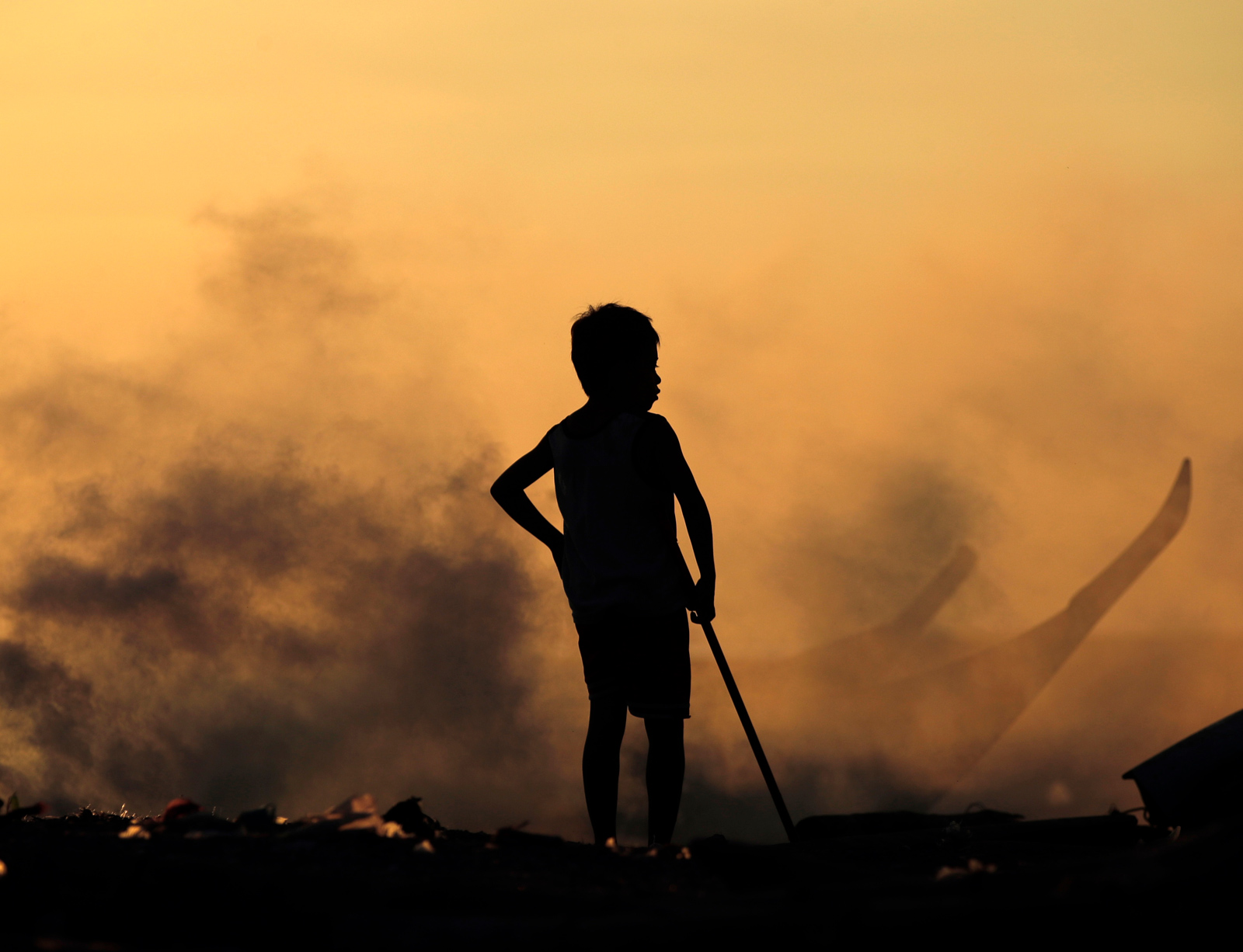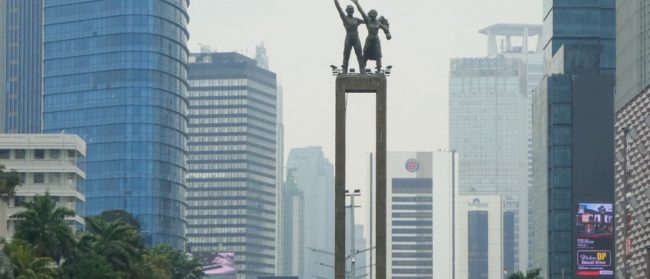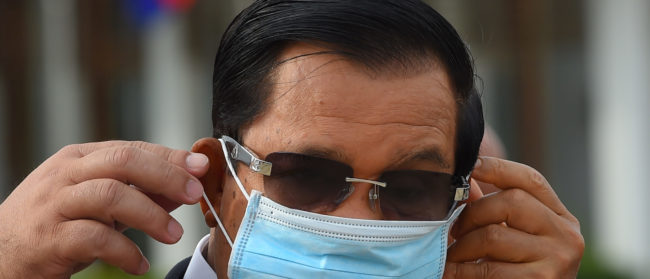Earlier this year, as COVID-19 extended its reach across Southeast Asia, each country began to implement forms of quarantine and lockdown measures to curb the spread of the virus.
The usual hustle and bustle of life, business and traffic, all came to a sudden standstill, and thanks to statistics provided to the Globe by IQAir, we can observe the effect this has had on air quality across major cities in Southeast Asia up until the mid-May.
In February, prior to nationwide lockdowns on industry and movement, only one city in the region, Singapore, registered air quality in the ‘Good’ range. Four fell in an Air Quality Index (AQI) of ‘Moderate’, three in ‘Unhealthy’ and two (Hanoi and Yangon) were in the ‘Very Unhealthy’.
By May, a major turnaround in air quality became evident across the region. Bangkok, in particular, was the most improved among the bunch and more than halved its AQI score. Four cities had moved up to an AQI indicative of ‘Good’ air quality and a noticeable improvement could be seen across the board.
That is except Jakarta, where air quality has puzzlingly worsened thanks to underlying factors, removed from the pandemic and the resulting lockdown measures. A full explanation of Jakarta’s worsening air quality can be found in this separate in-depth report.
VIETNAM: HANOI & HO CHI MINH CITY

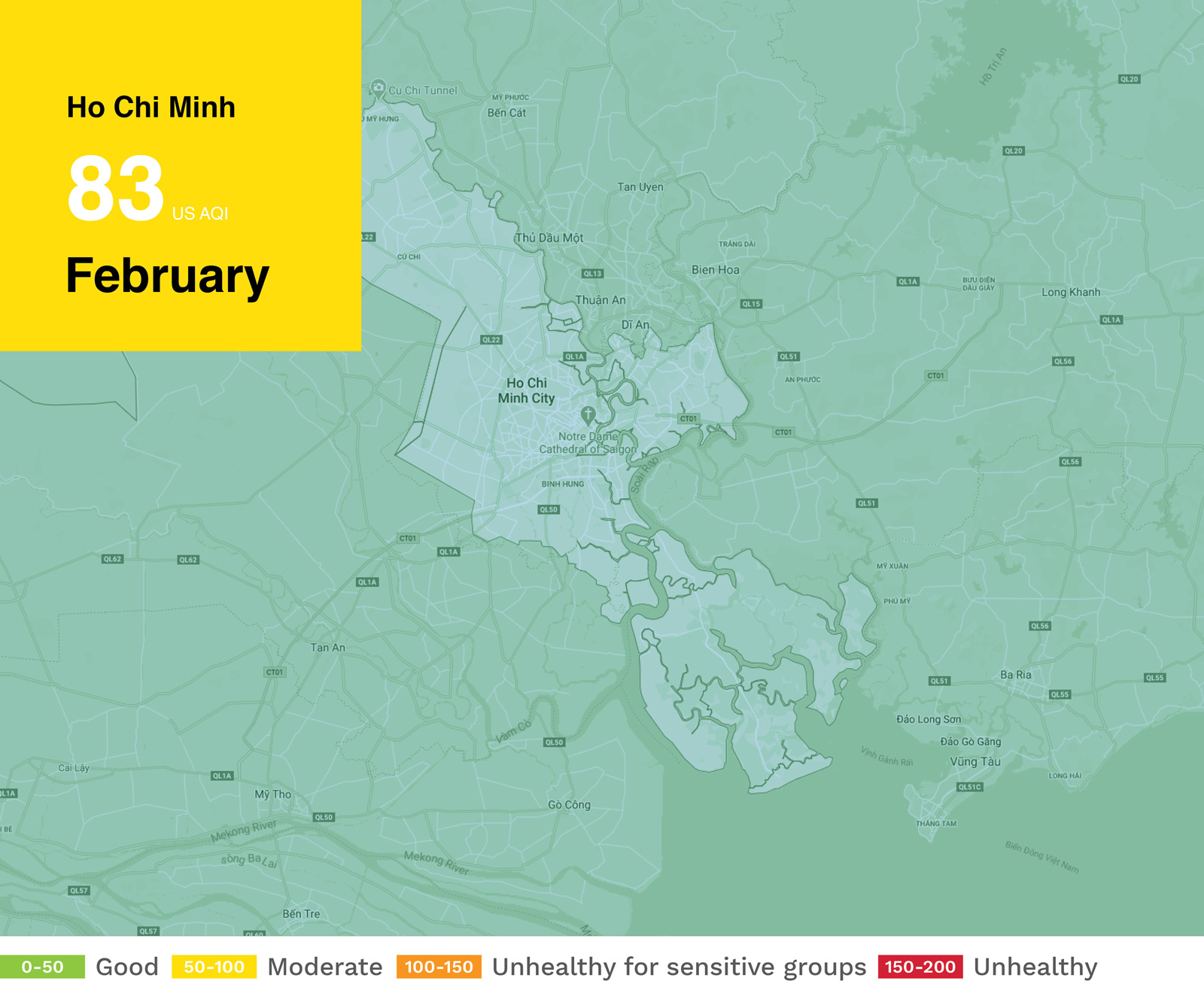
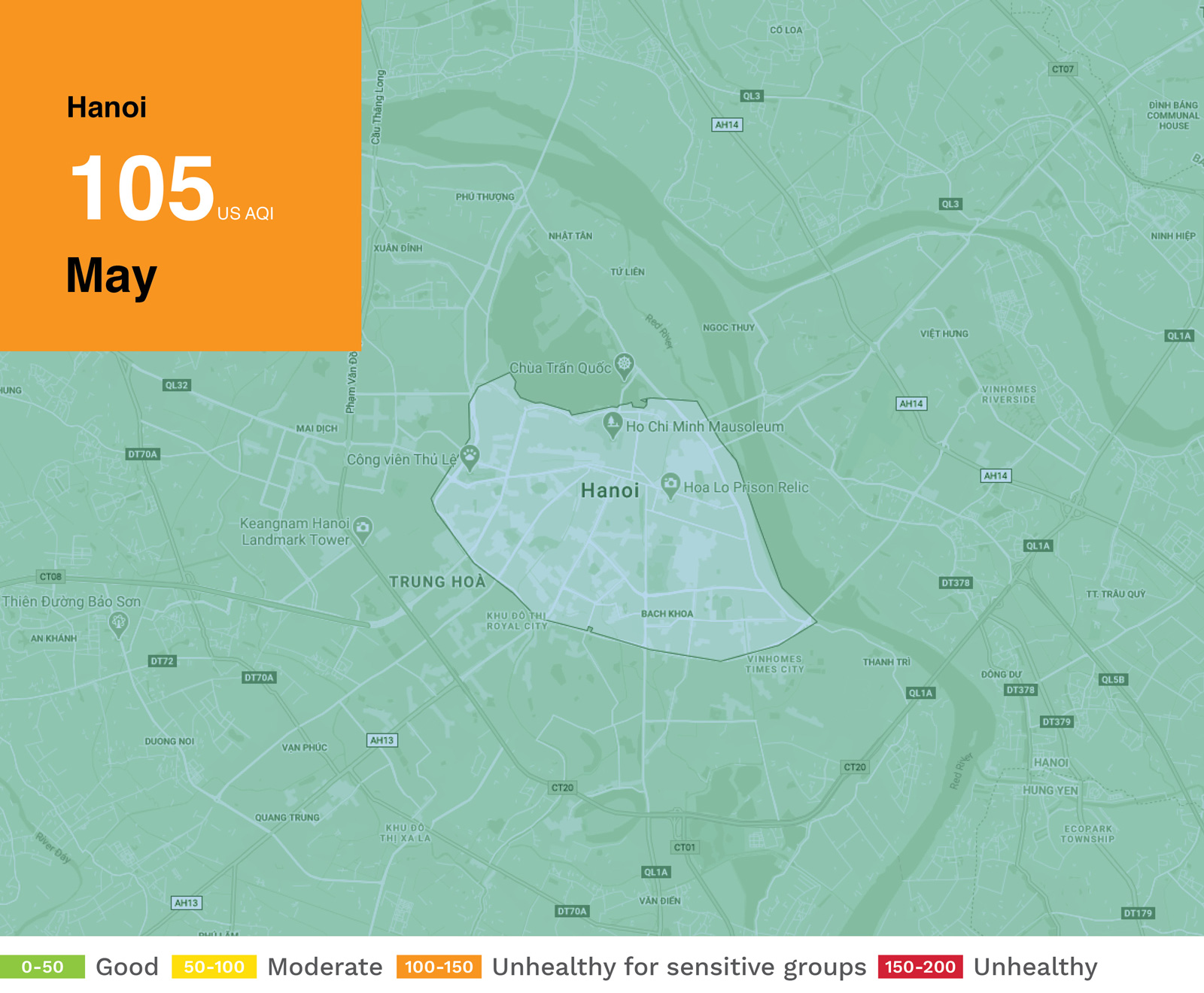
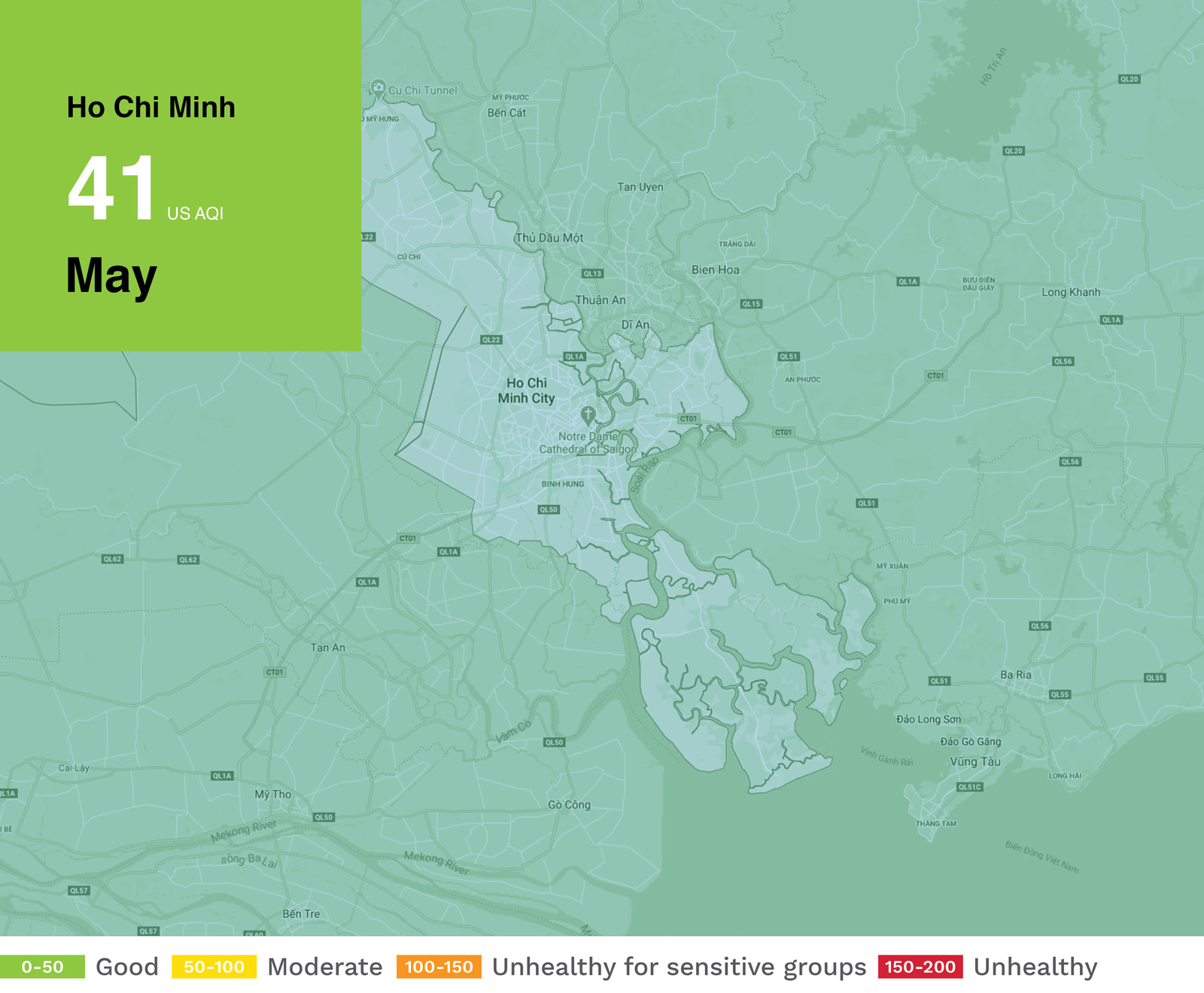
Prior to the pandemic, the streets of Vietnam were a chaotic congestion of motorbikes, often leaving tourists in a wake of black smoke. Permanently flanking the roads, Vietnam’s fleet of motorbikes left no breathing room for the flow of traffic – at least not until Covid-19.
Last year, Hanoi was ranked the seventh most polluted city in the World Air Quality Report in 2019, overtaking China’s Beijing. A key driver of the capital’s pollution is its reliance on two-wheel transportation. Vietnam has a staggering 58 million motorbikes, many of which have limited emission control technology.
However, Vietnam’s battle for better air quality has hit smaller speed bumps in recent months, with Hanoi’s monthly average AQI index improving from an unhealthy high of 157 in February to 105 in May.
The same can be said of Ho Chi Minh City, whose AQI index went down from 83 in February – ‘Moderate’ – to 41 as of mid-May, a value that falls in the range of good air quality.
Hoang Duong Tung, chairman of the Vietnam Clean Air Partnership, said that the number of vehicles on the city’s streets had dropped by 80% during the nationwide social distancing campaign, which started on April 1.
In a move considered to be a breath of fresh air, Hanoi city council also aims to ban motorcycles by 2030 and channel more resources into developing public transportation in hopes of bringing about an improvement in air quality.
MANILA
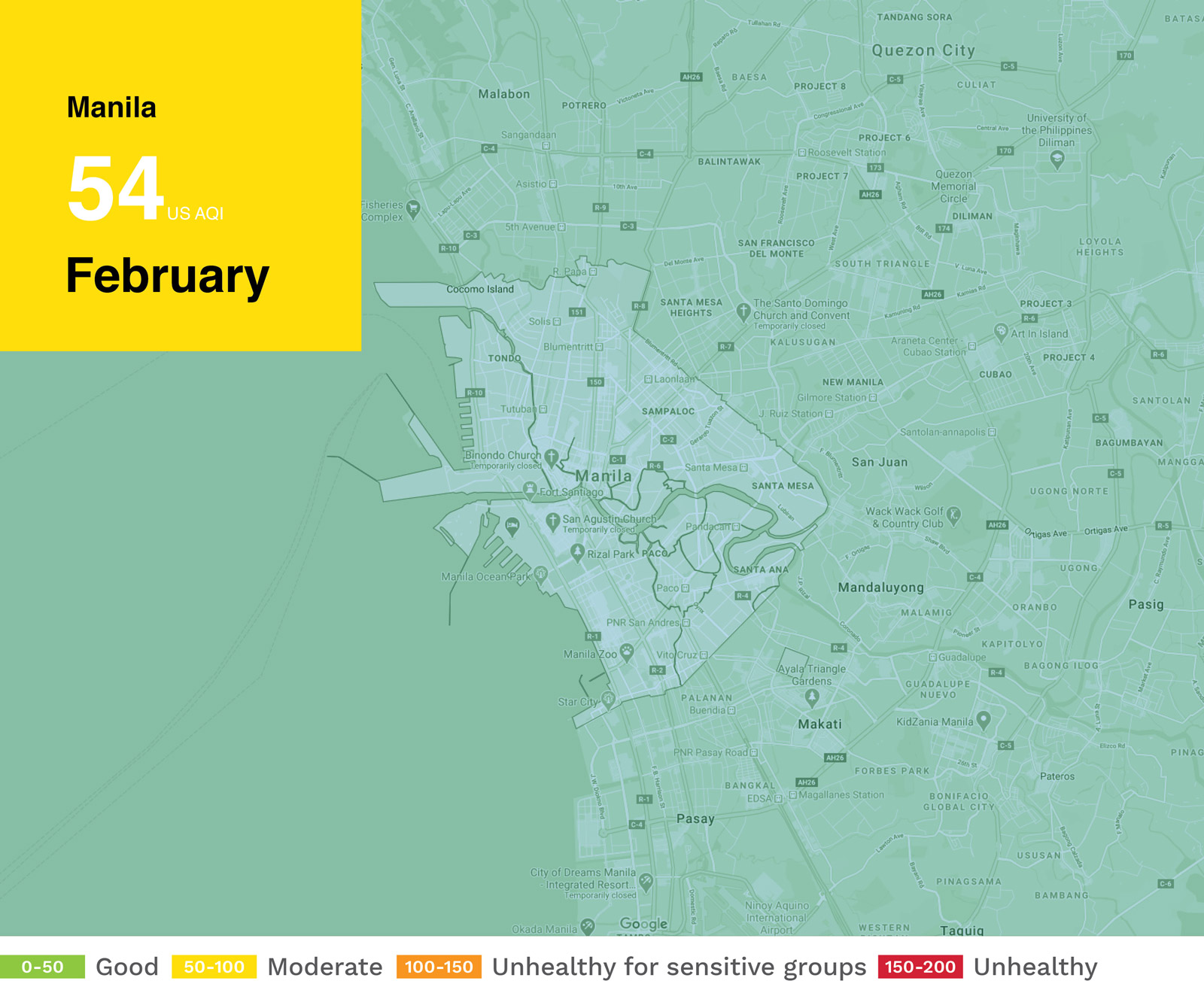
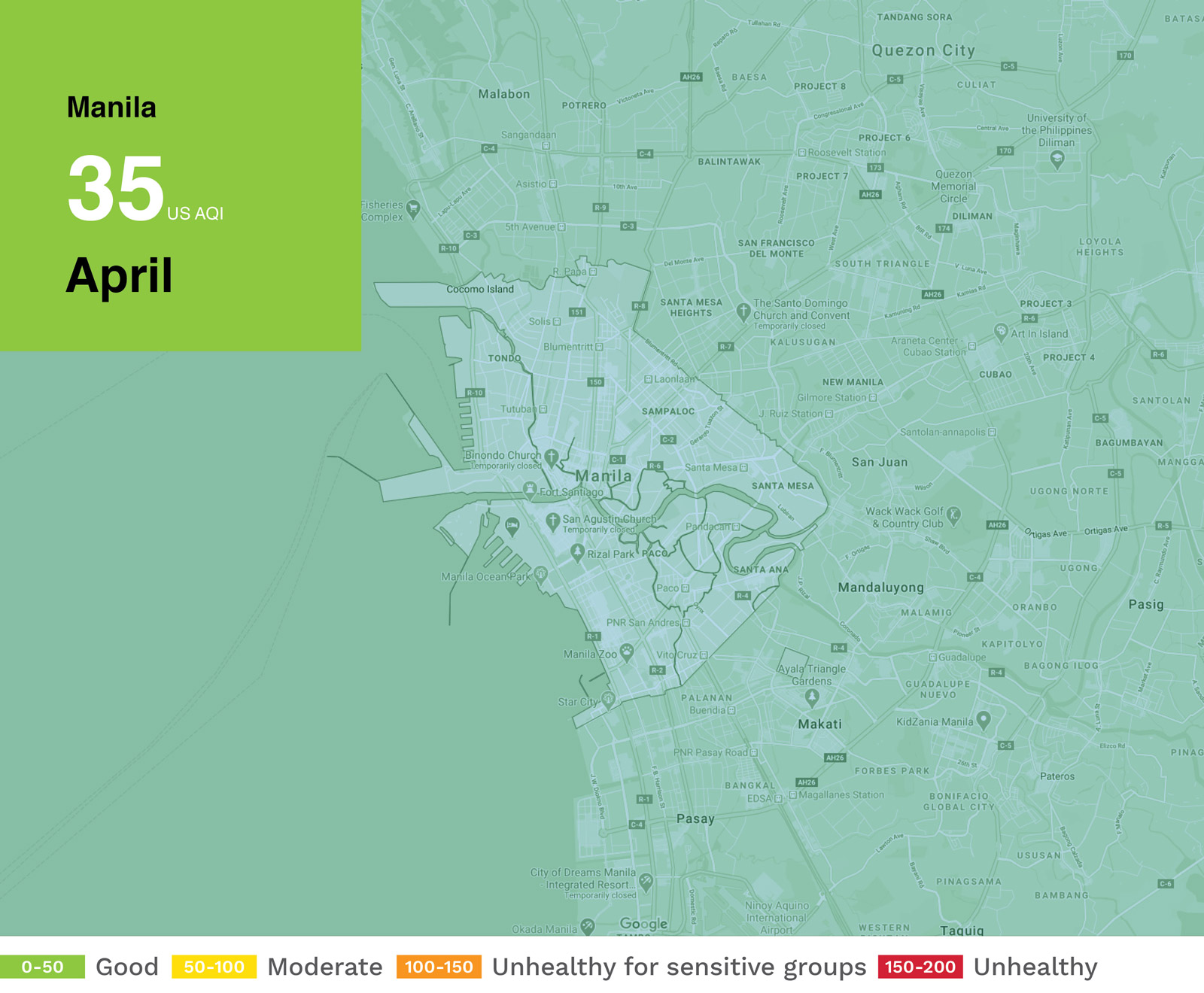
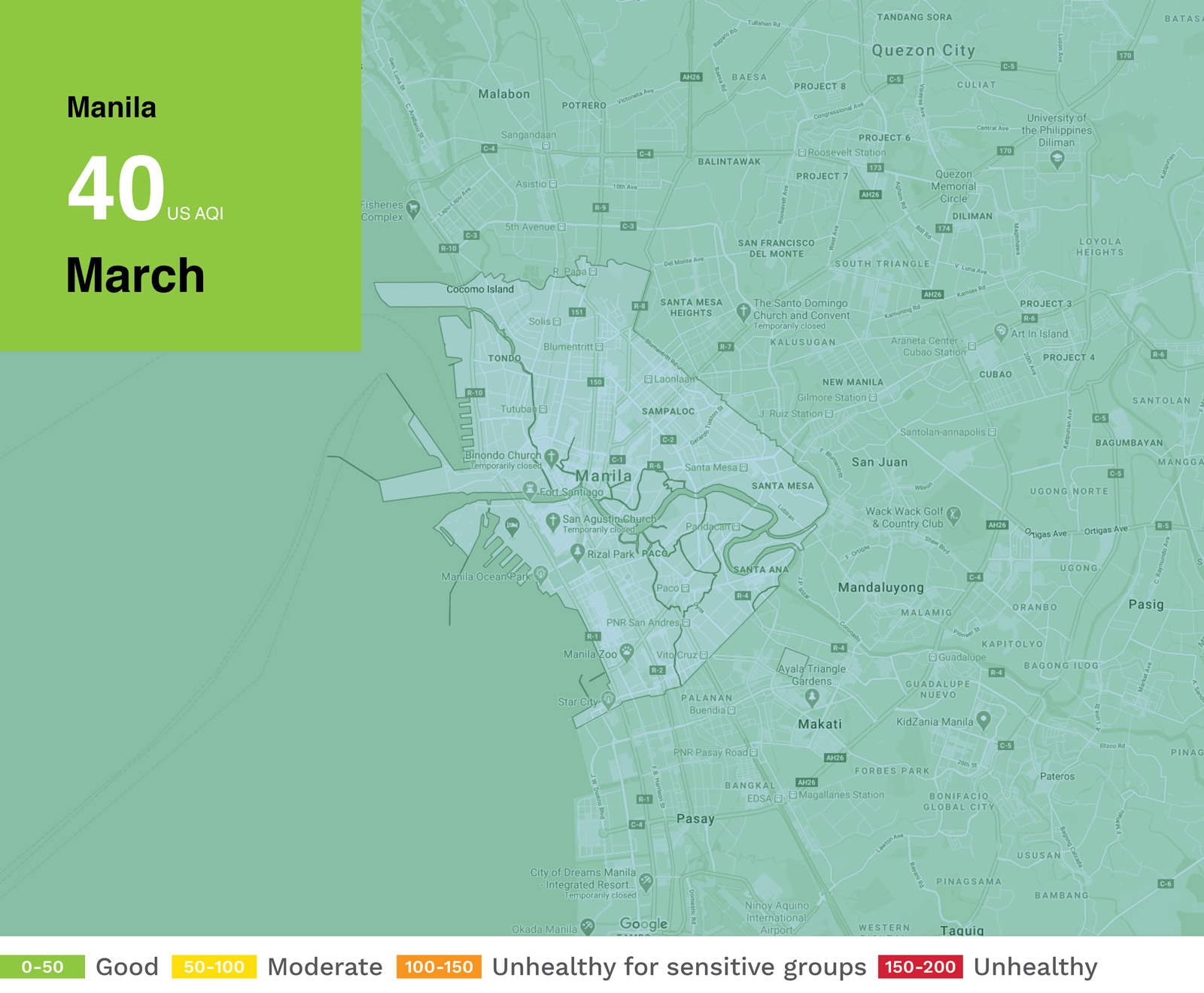
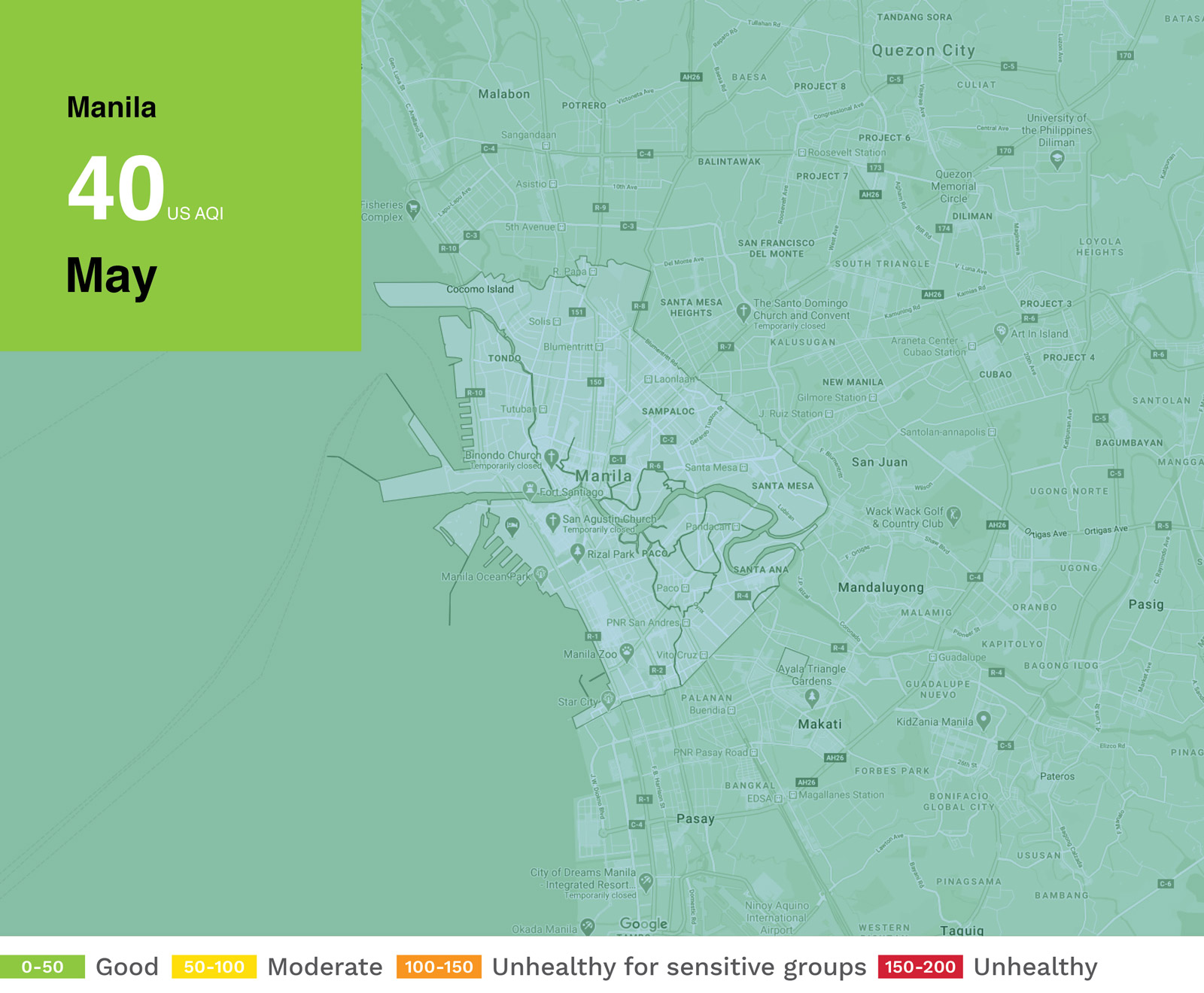
A week after lockdowns were implemented across Luzon, people of Metro Manila witnessed a sight not beheld since decades – clear skylines and a breath-taking view of the sprawling Sierra Madre mountain range.
According to data from IQair, Manila’s monthly average AQI went from a figure of 54 in February – ‘Moderate’ – to a consistent streak of ‘Good’ figures between 35-40 from March to May.
This corresponds with the suspension of public transportation and non-essential businesses in Metro Manila, in effect since March 16, an effort by the Philippine government to control the spread of the Covid-19.
The enhanced community quarantine (ECQ) measures had further reduced air pollution in the metro. Key perpetrators of PM10 and PM2.5 emissions such as activity from fossil fuel power plants, wood burnings and emissions from motor vehicles have greatly reduced, paving the way for clear roads and clearer skies.
KUALA LUMPUR
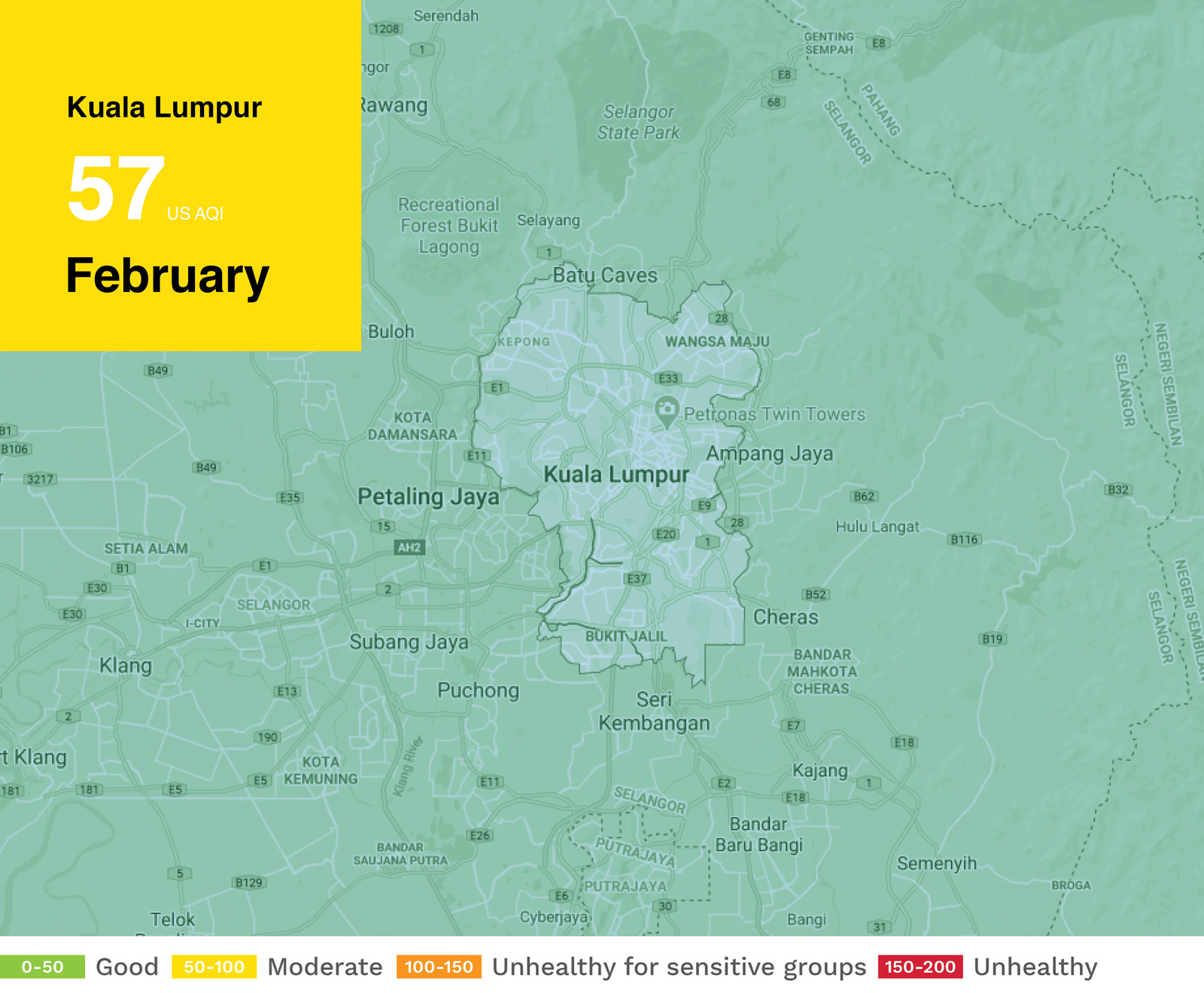
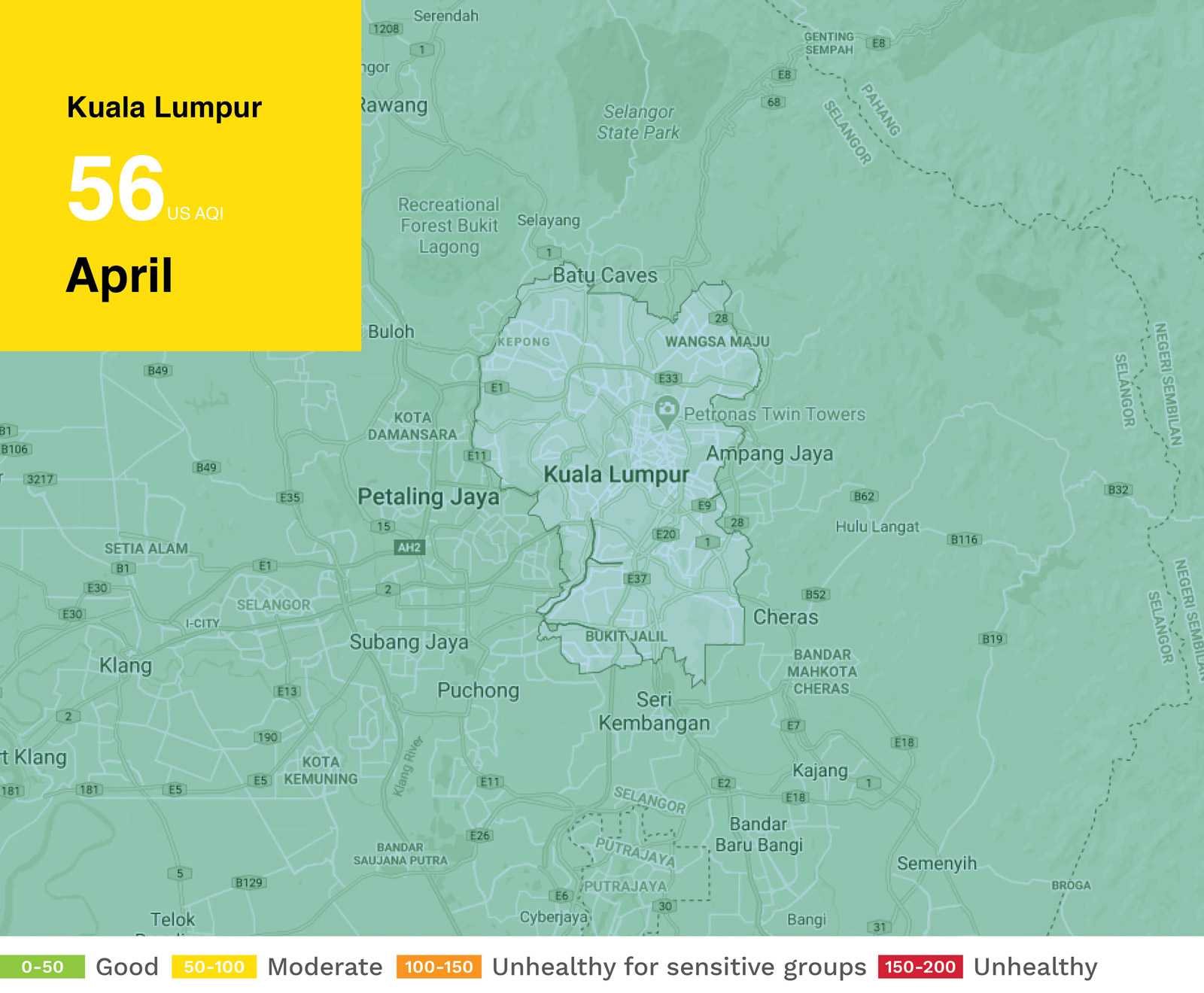
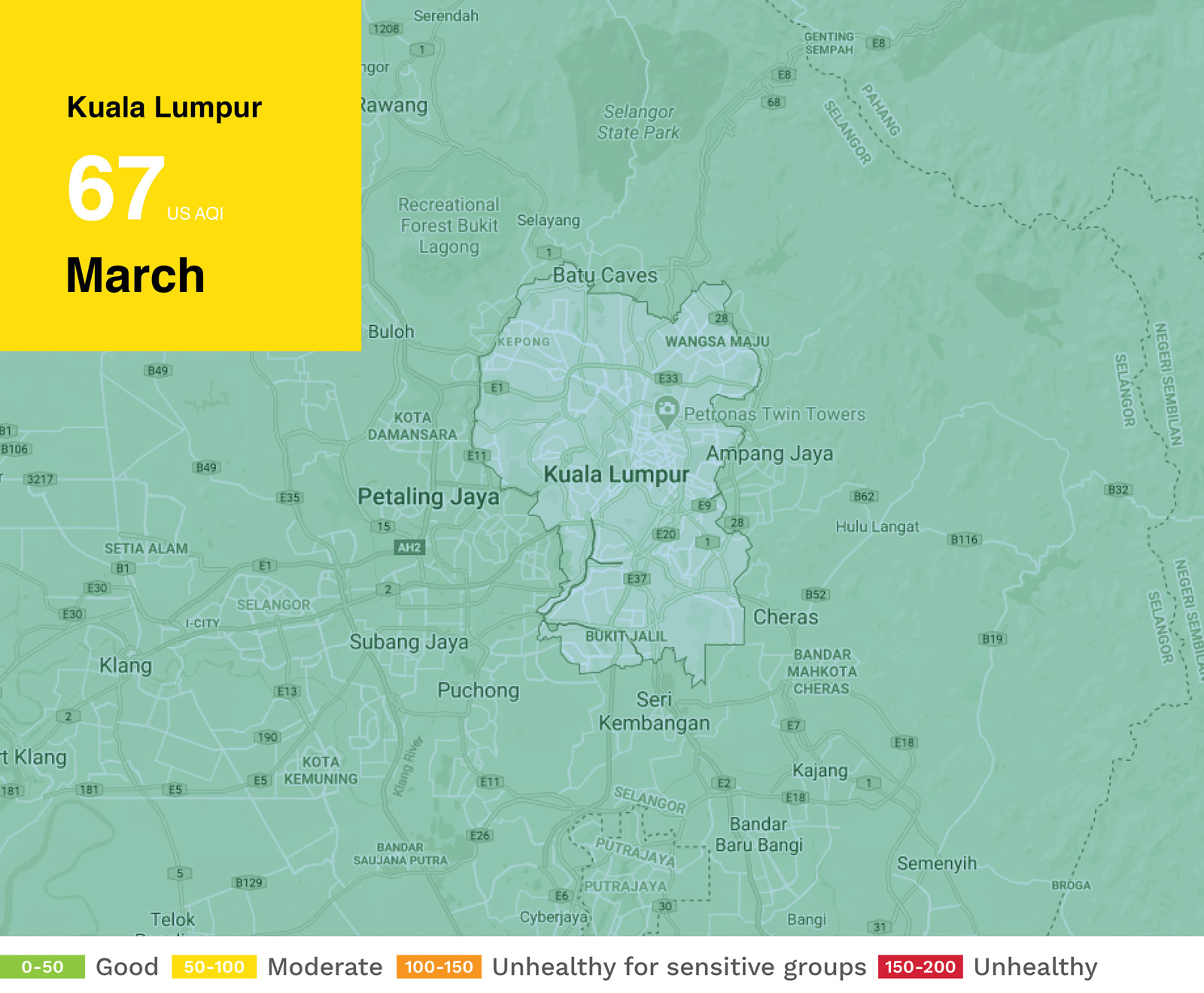
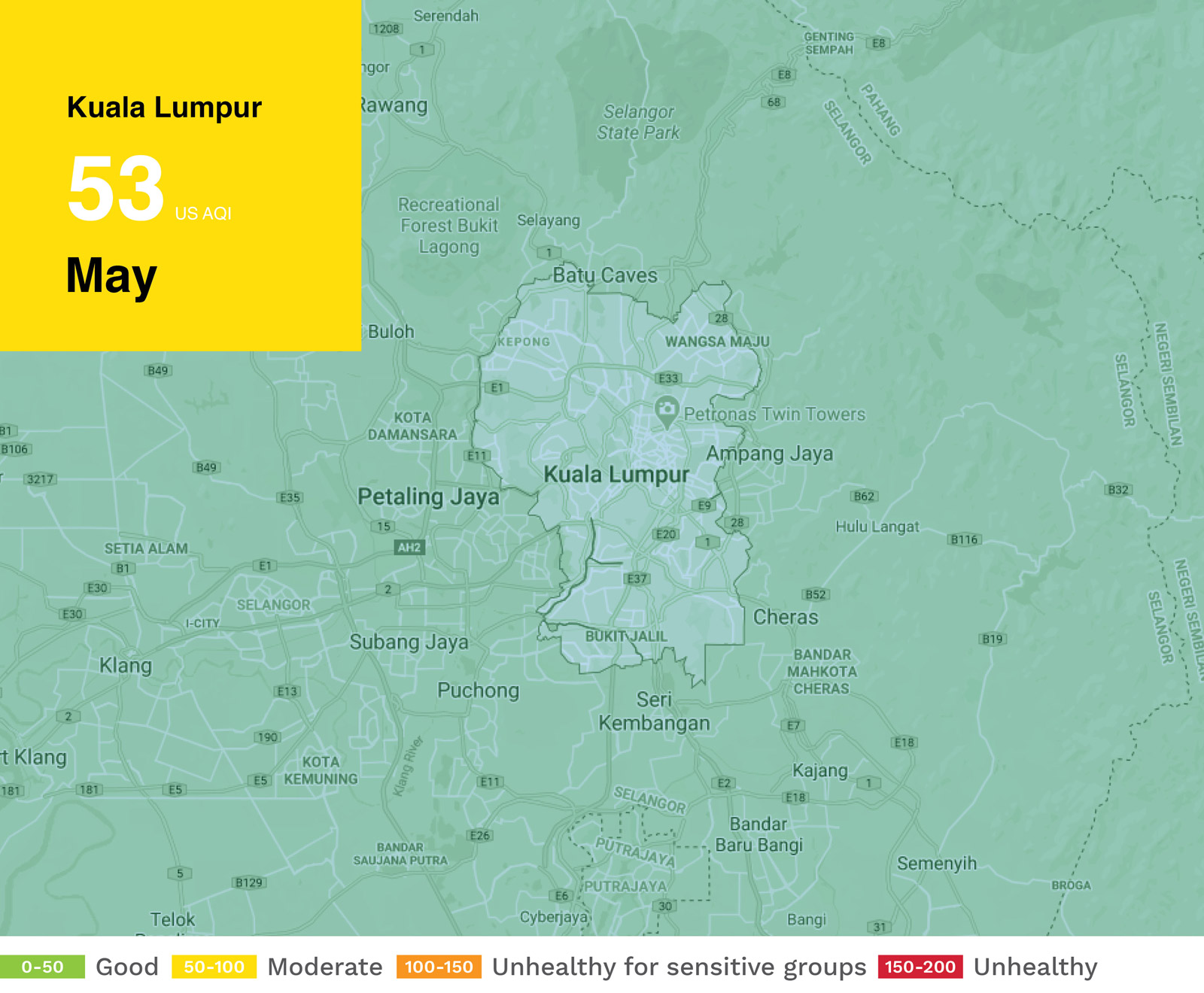
Currently in their sixth phase of Movement Control Order (MCO), in effect since March 18, the previously busy roads of Kuala Lumpur have come to a standstill for over three months.
What should have been a festive and bustling season in the weeks leading up to Hari Raya was instead met with silence, as vendors took their Ramadan bazaars online.
Unlike most of its Southeast Asian counterparts, the air quality of the city centre, long plagued by heat waves due to the accumulation of carbon emissions and urban density, has remained consistent in the ranges of ‘Moderate’ from February to May as shown in IQair’s data. Slight improvements can be seen from the cutback of vehicle use.
SINGAPORE
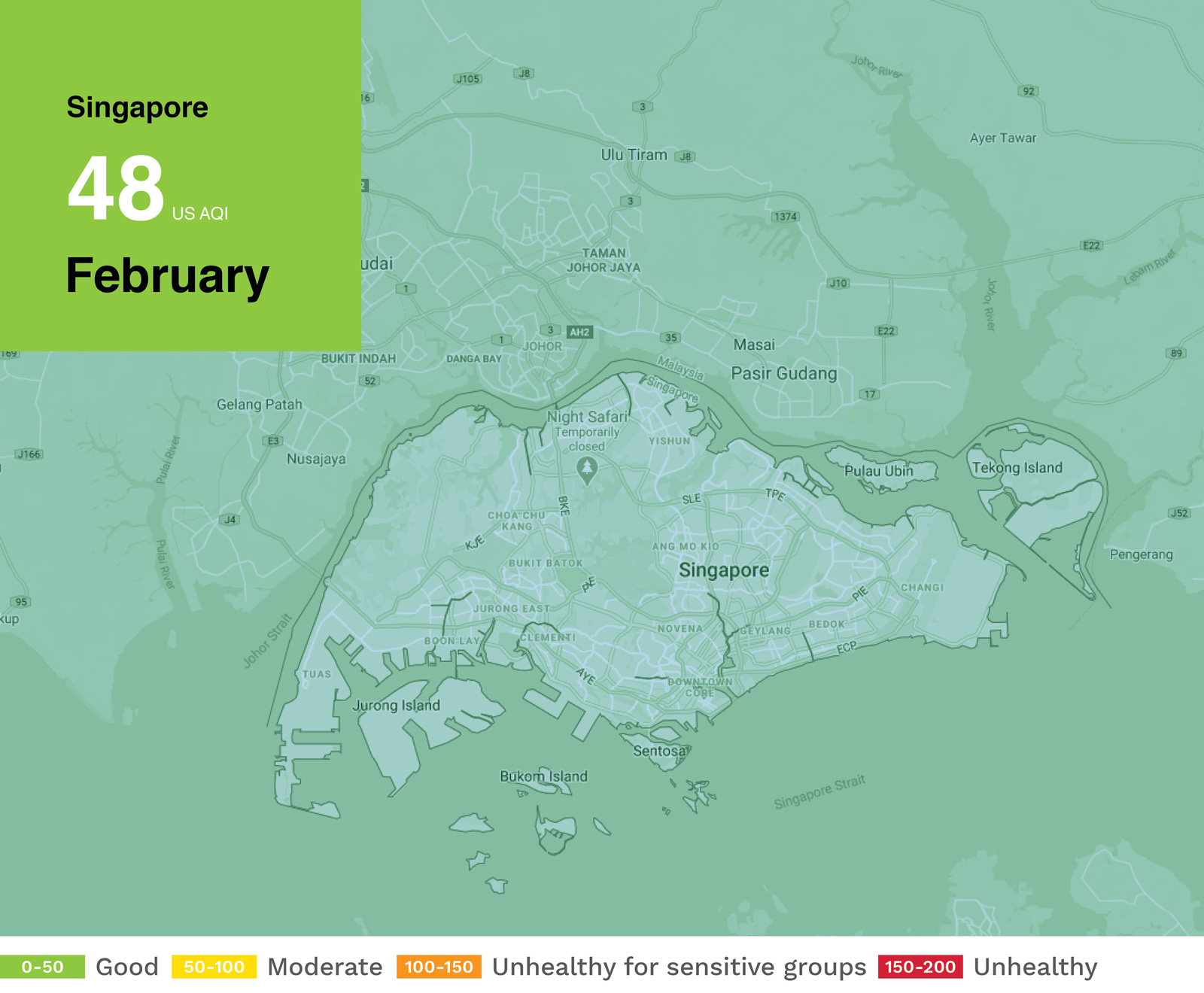
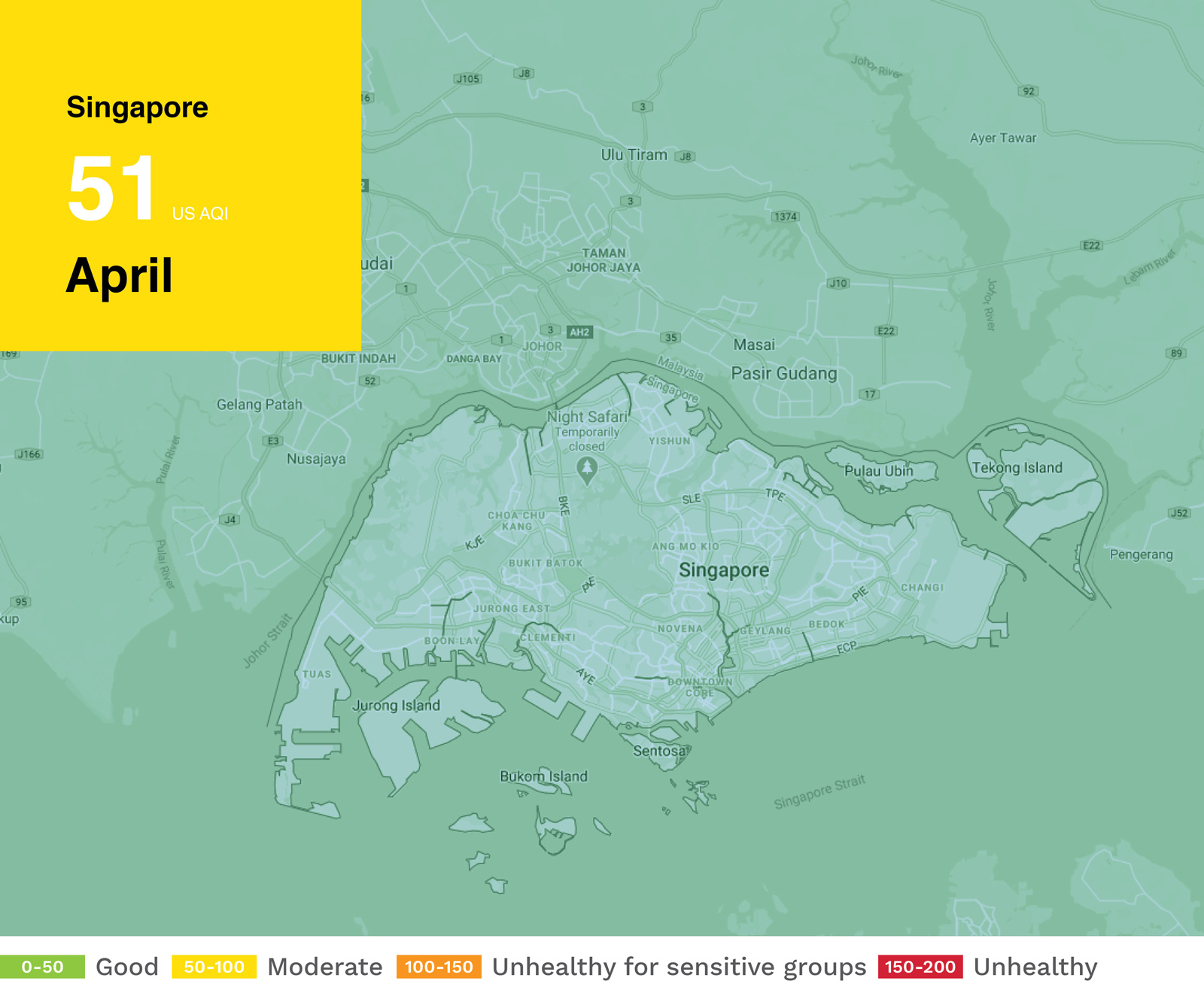
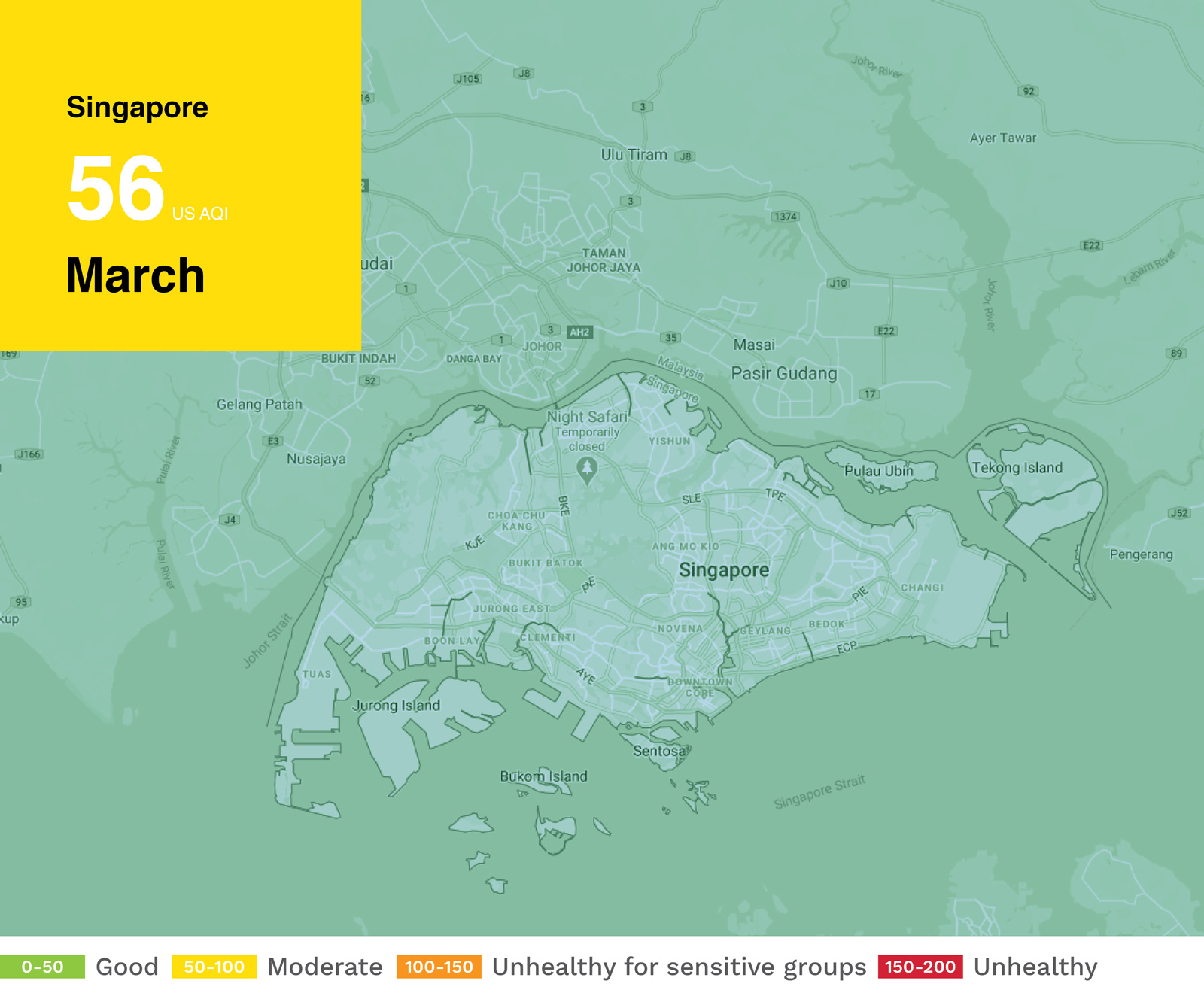
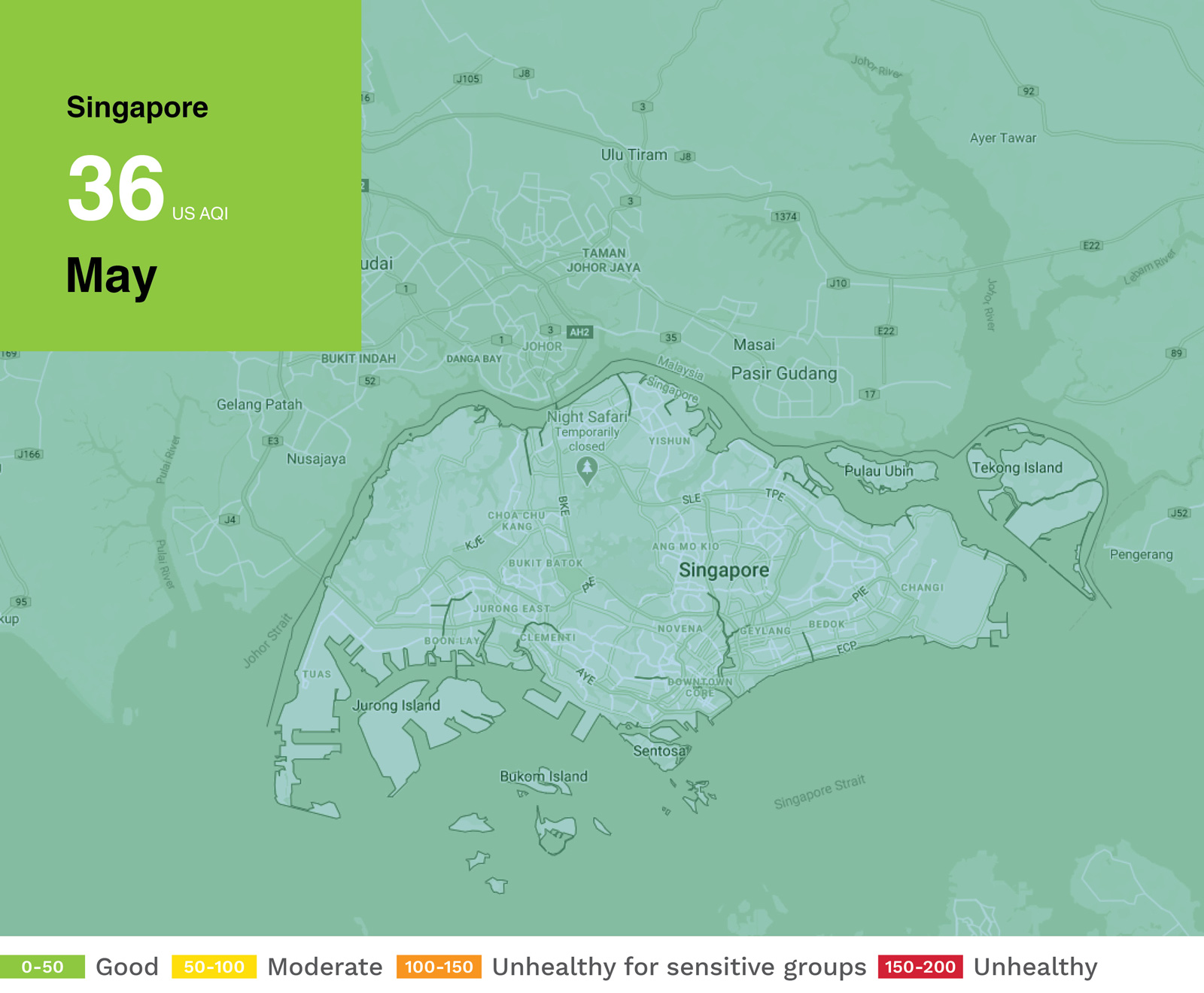
Singapore’s Central Business district, the heart of the city state’s economic activities saw its thinnest footfalls in the past two months of the quarantine measures. Less vehicles were seen speeding under the gleaming skyscrapers of the financial hub – a departure from its usual rush hour hubbub.
The Circuit Breaker measures which were in effect on April 7 placed a temporary stopper on most activities, ranging from school closures to stricter telecommuting arrangements for most workplaces. This corresponds with IQair’s record of a steady drop in Singapore’s AQI from 56 in March to 36 in May, a figure that falls firmly in the category of ‘Good’ air quality.
The city state’s Circuit Breaker measure ends on 1 June.
JAKARTA
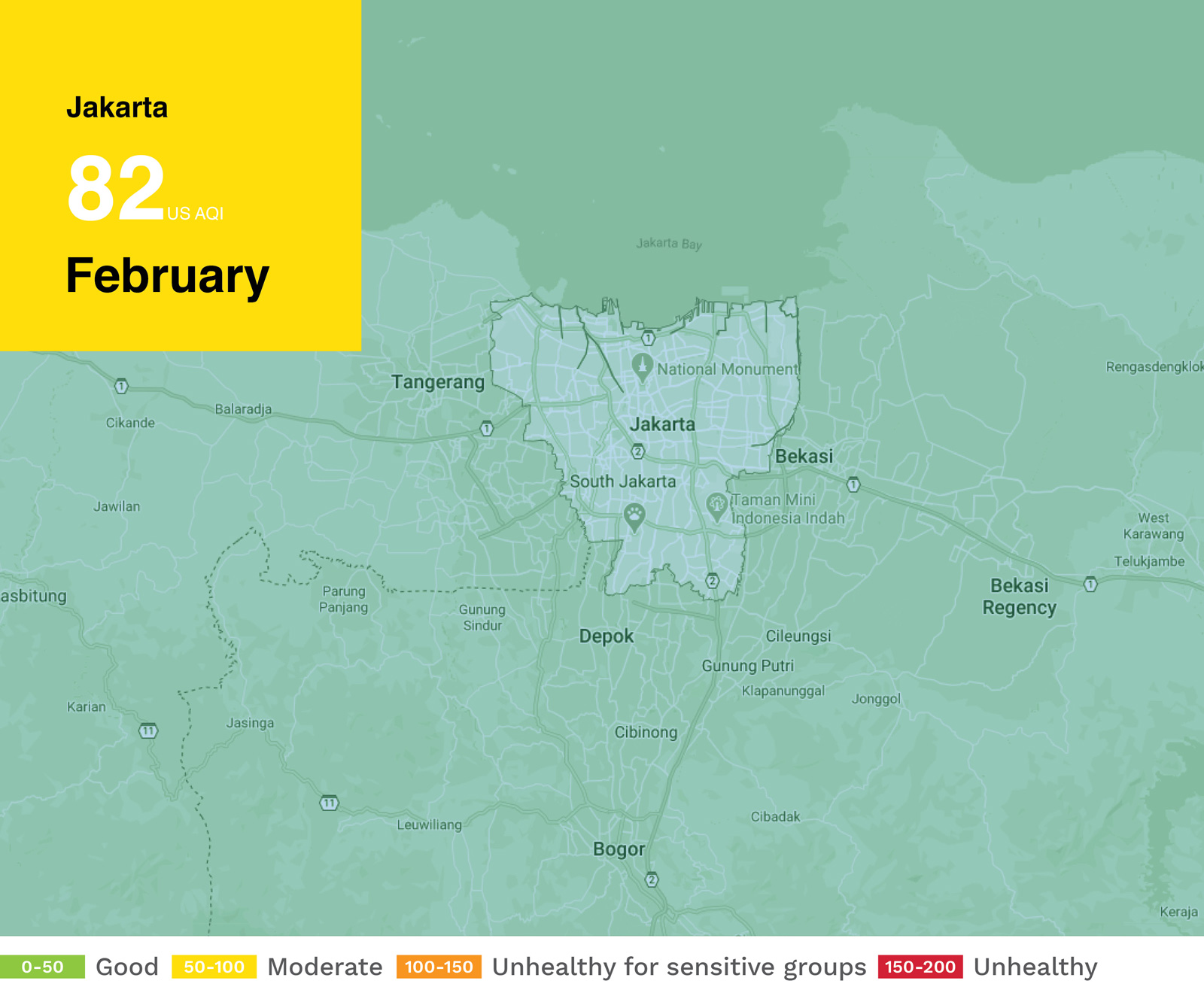
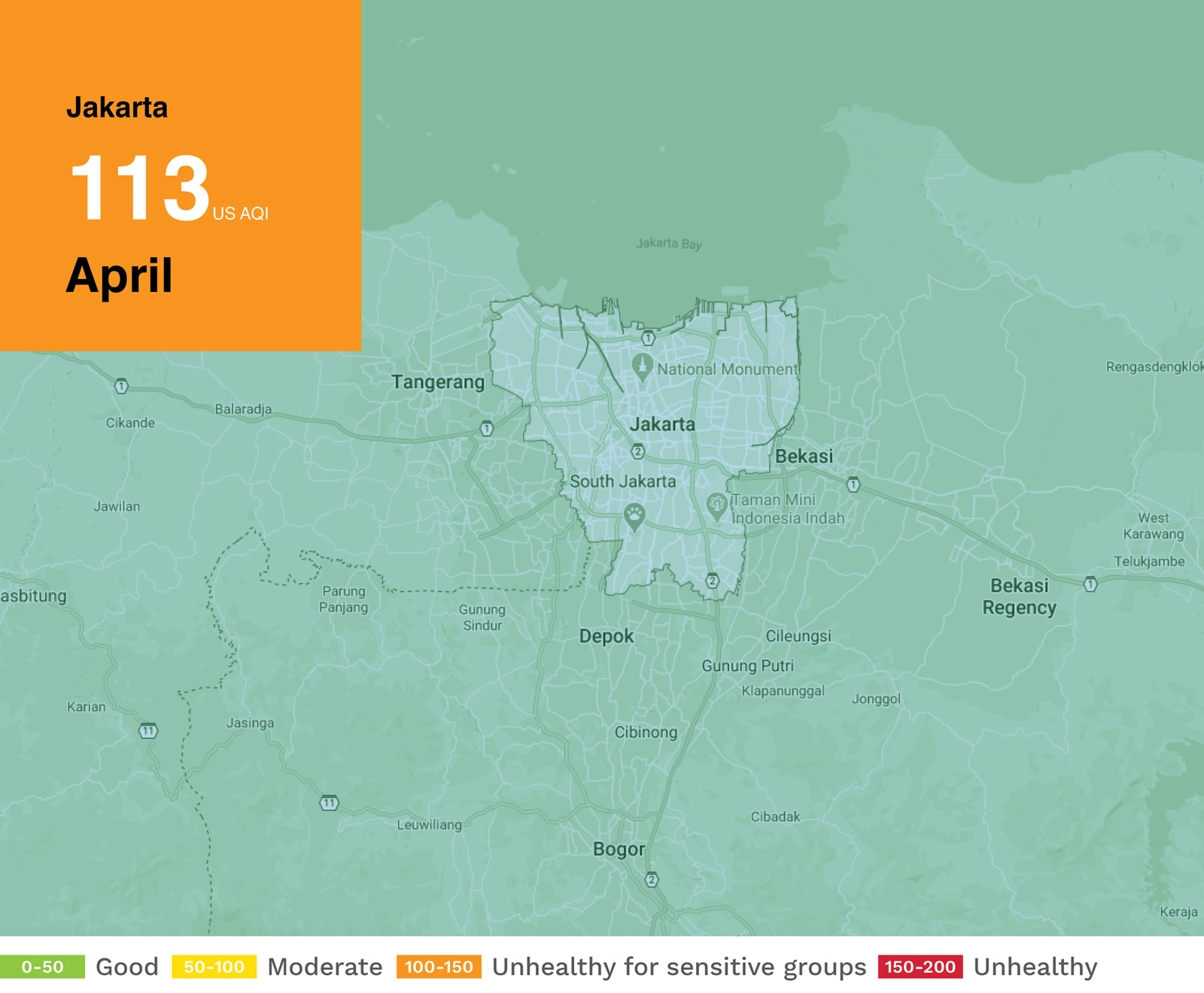
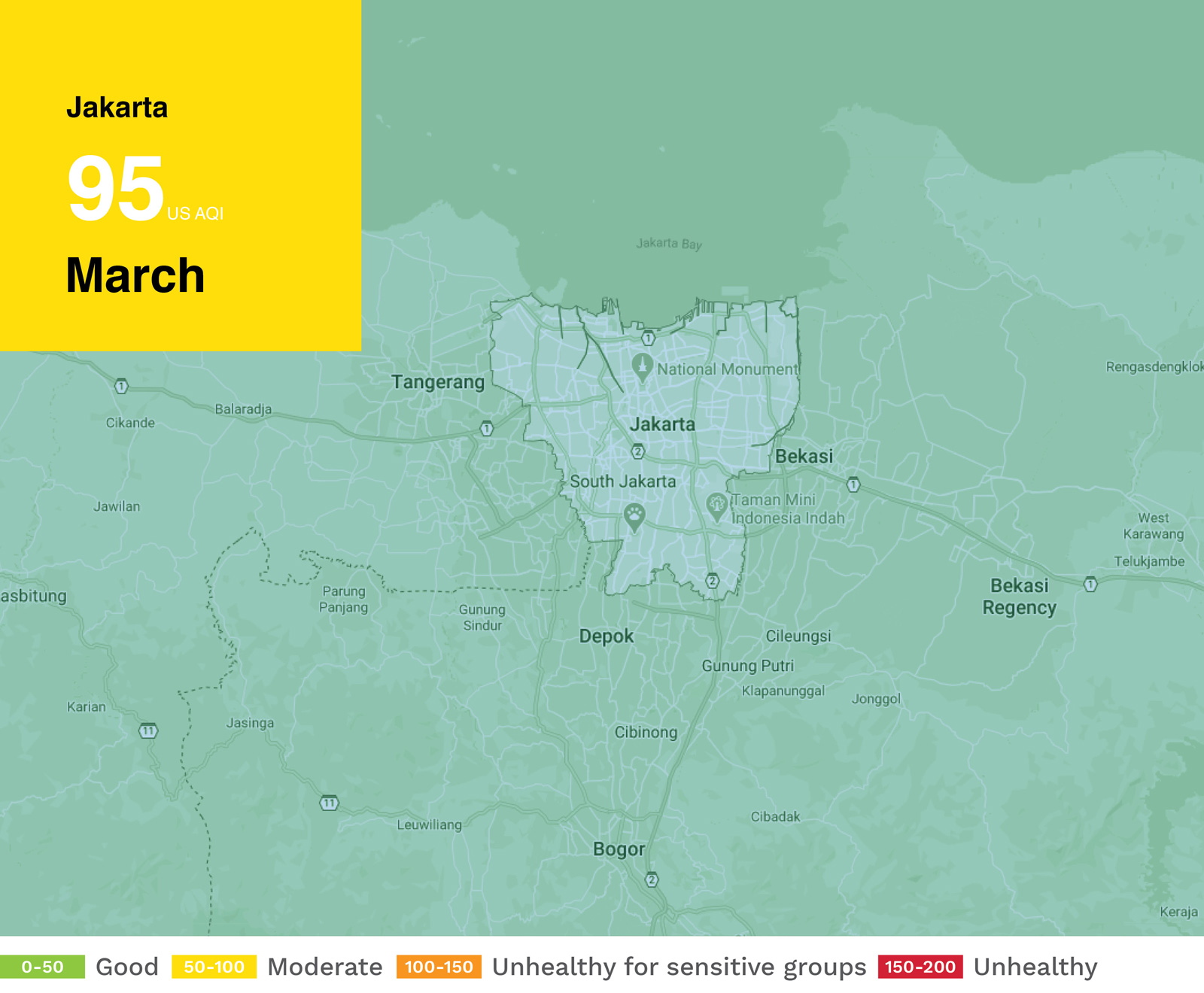
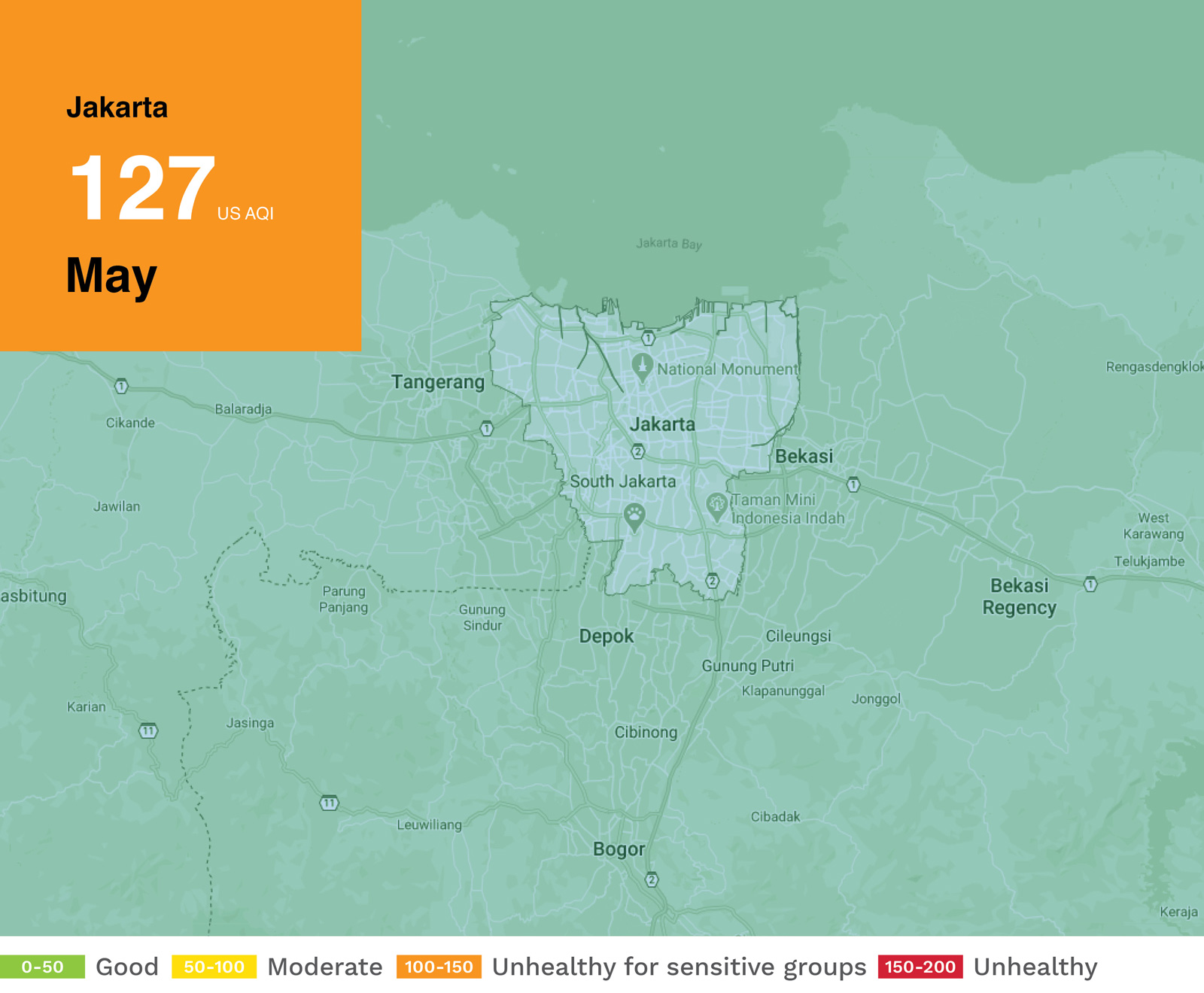
Not just the most populous capital, but the most populous city in ASEAN with just over 10 million inhabitants – Jakarta is a megacity in every sense of the word. But with a creaking and insufficient transportation system, it is car-heavy and highly polluted.
Residents and activists of the city even submitted a civil lawsuit against the Indonesian government last year, because of the worsening pollution.
Jakarta, however, has seen a significant reduction in its traffic thanks to the partial lockdown imposed on the city that started on April 10, which has been extended to June 4. But thanks to statistics provided by IQair, we can see that the air quality in February to mid-May actually worsened in contrast to every other major Southeast Asian city.
Rising from a Moderate AQI of 82 in February, to an unhealthy-high of 127 in mid-May, the figures for Jakatar appear puzzling.
But according to the Centre for Research and Clean Air (CREA), this can be partly explained by the increase in PM2.5, particulate matter, in Jakarta. According to CREA’s modelling, wind trajectory during this period helped carry pollution from power plants in the Banten province into Jakarta, worsening the air quality.
Read our exploration of Jakarta’s worsening air quality during the pandemic.
BANGKOK
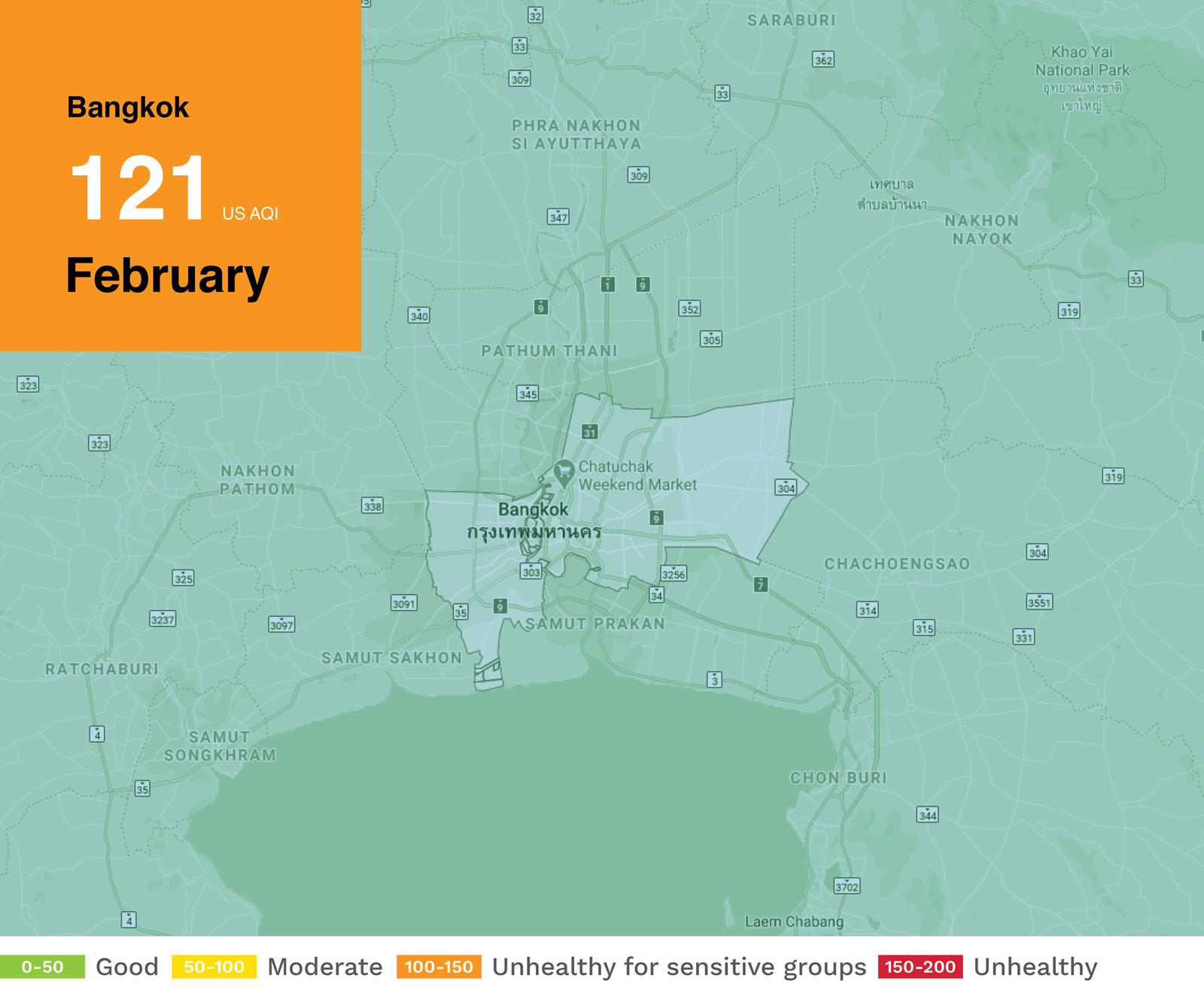
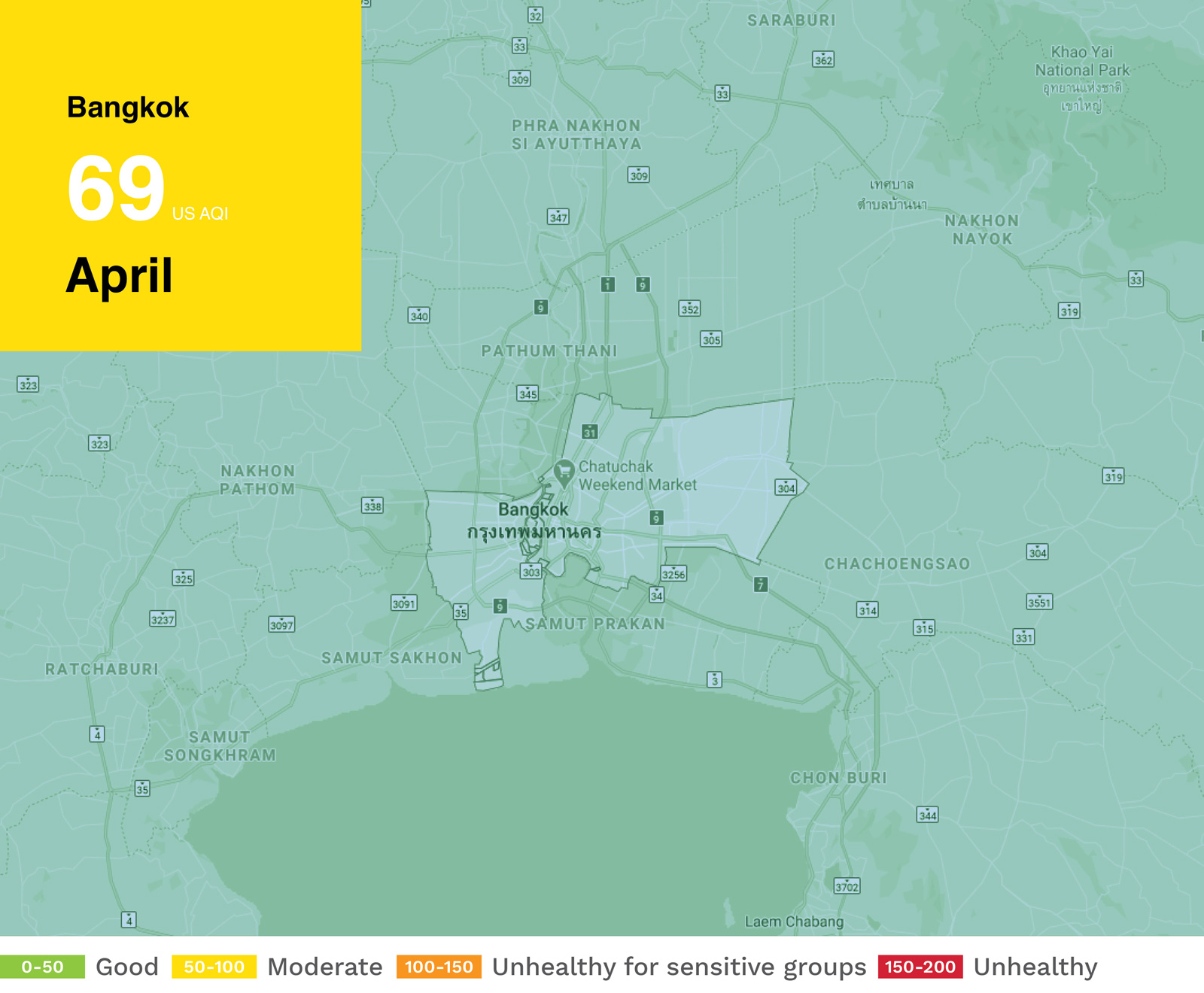
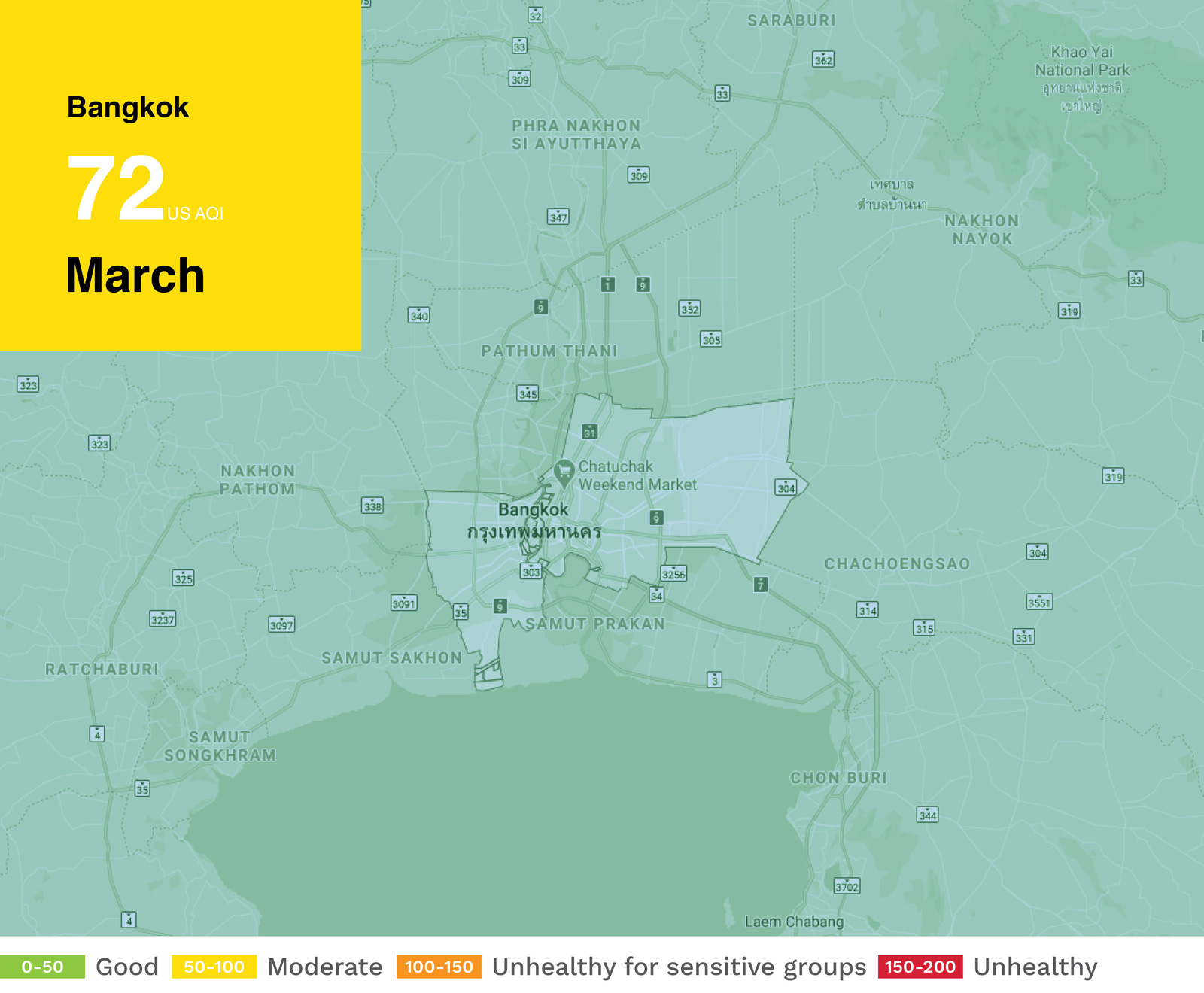
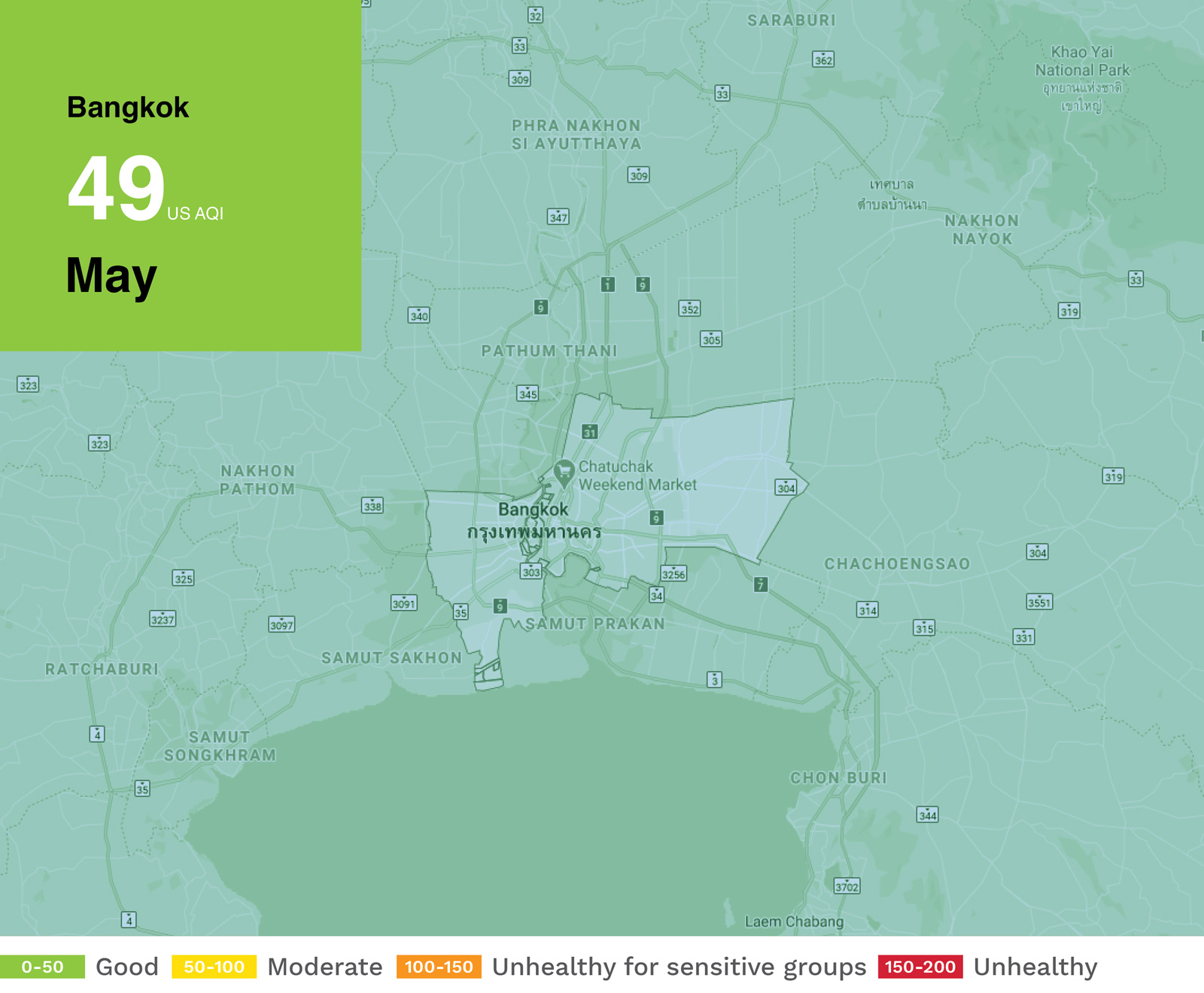
Bangkok, Krung Thep or the ‘City of Angels’, ironically known in part for its hedonism, has the air quality you would expect in one of the region’s largest cities.
With the greater Bangkok area home to over 15 million people, the pollution in Thailand’s capital has continued to worsen. In January this year, 437 schools were forced to shut for the day due to the exceptionally poor air quality.
Famed for its iconic tuk-tuks, anyone who has taken a ride through Bangkok in a rickshaw will be able to testify just how packed its streets are. It comes as little surprise that the Bangkok Metropolitan Administration (BMA) revealed earlier this year that 76% of PM2.5 in the city’s air is caused by road traffic.
With travel dwindling even before the state of emergency on March 26 and the nationwide curfew on April 3, Bangkok’s air quality has noticeably improved with the significant reduction in traffic.
IQair clocked its average AQI in February at 121, potentially dangerous for at risk groups, but the average for May is 49 – a good, healthy average and a significant improvement.
PHNOM PENH
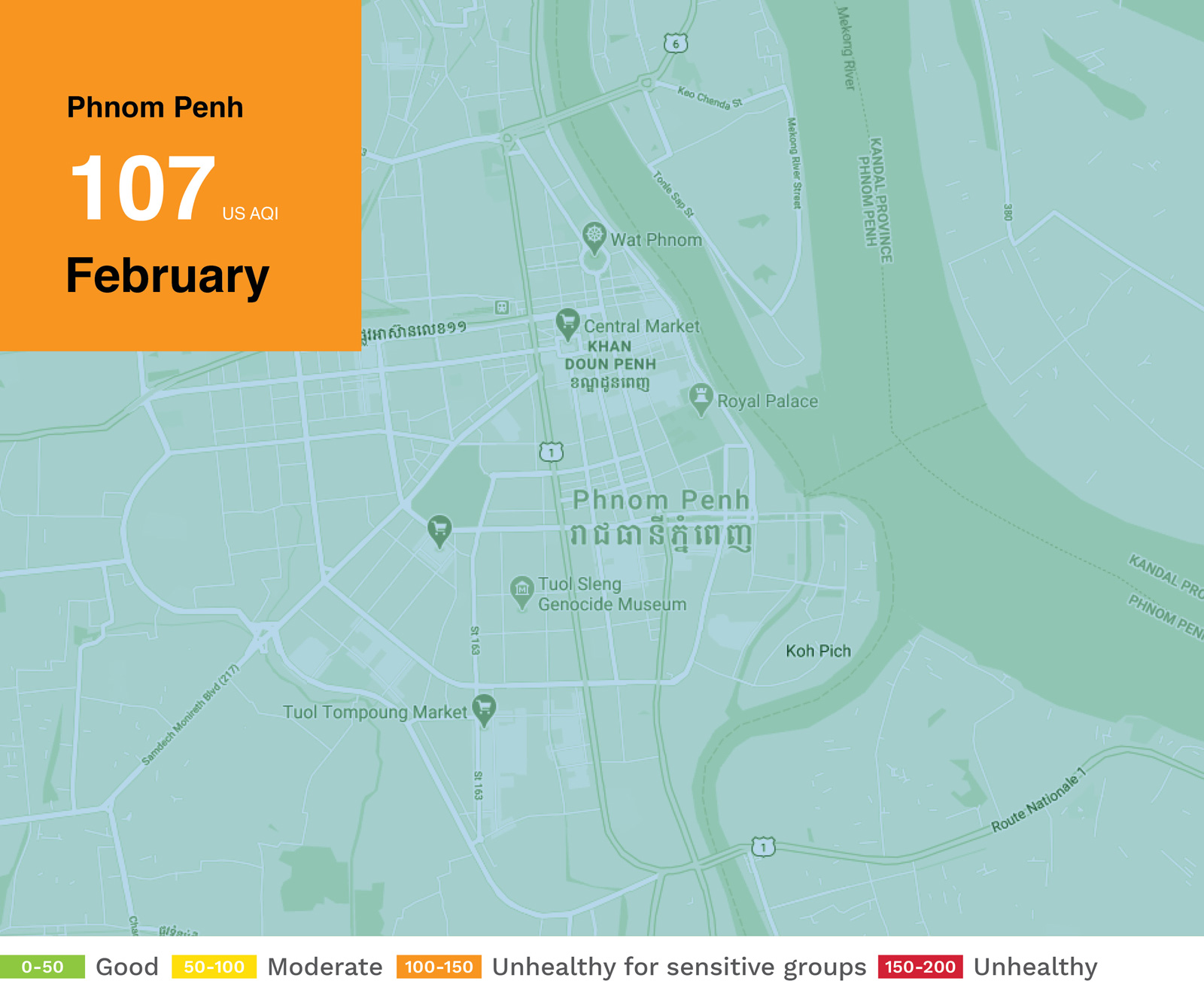
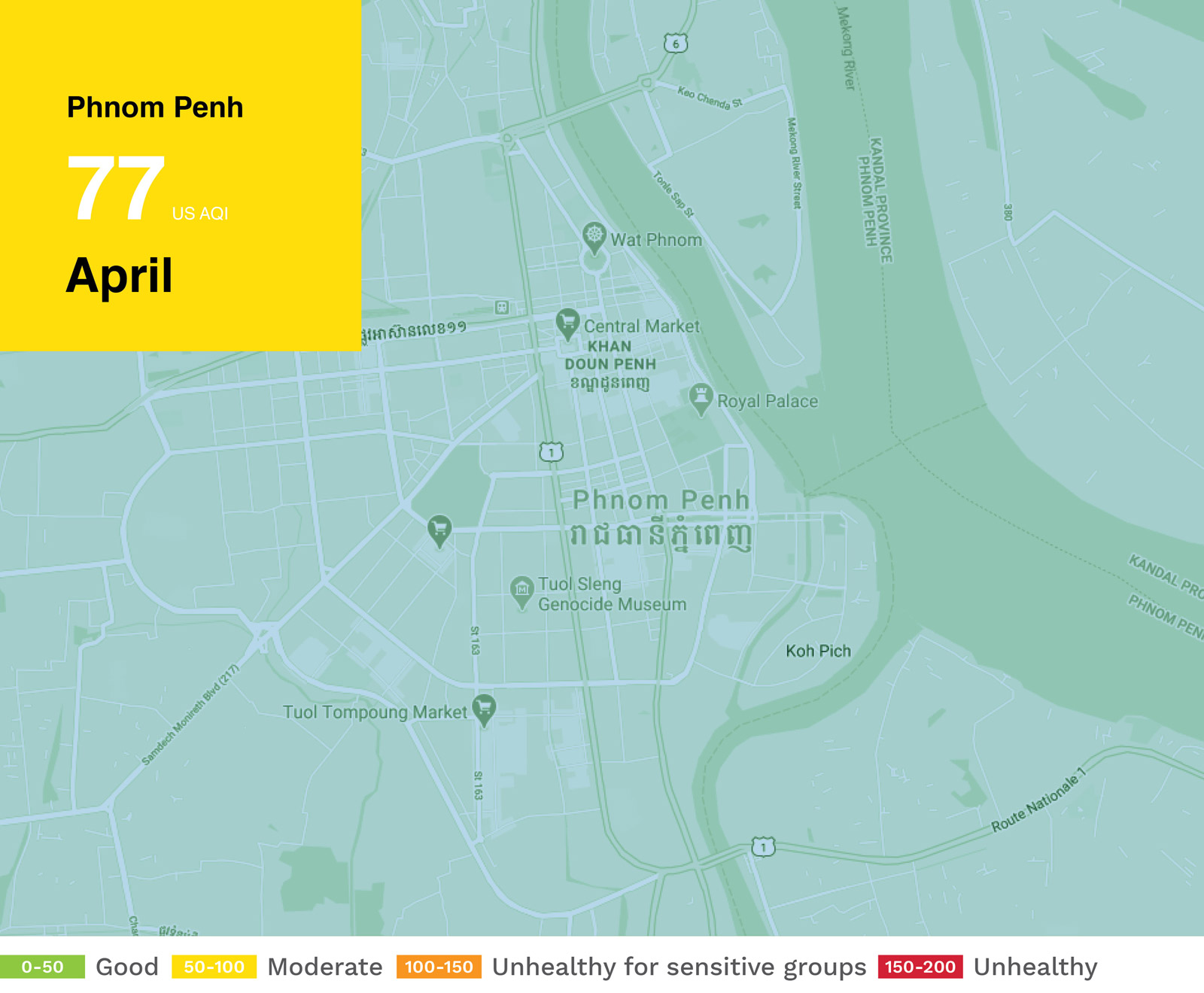
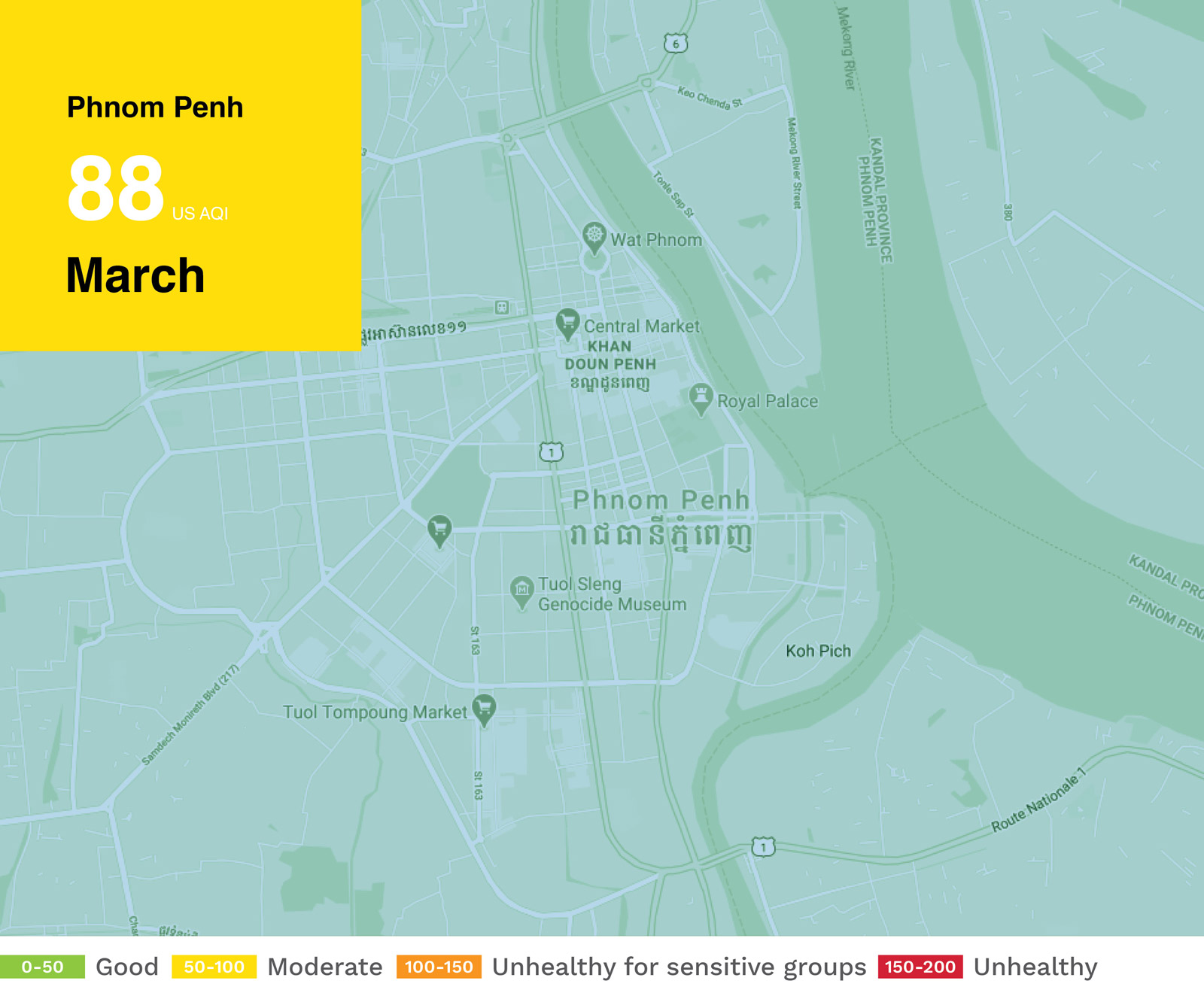
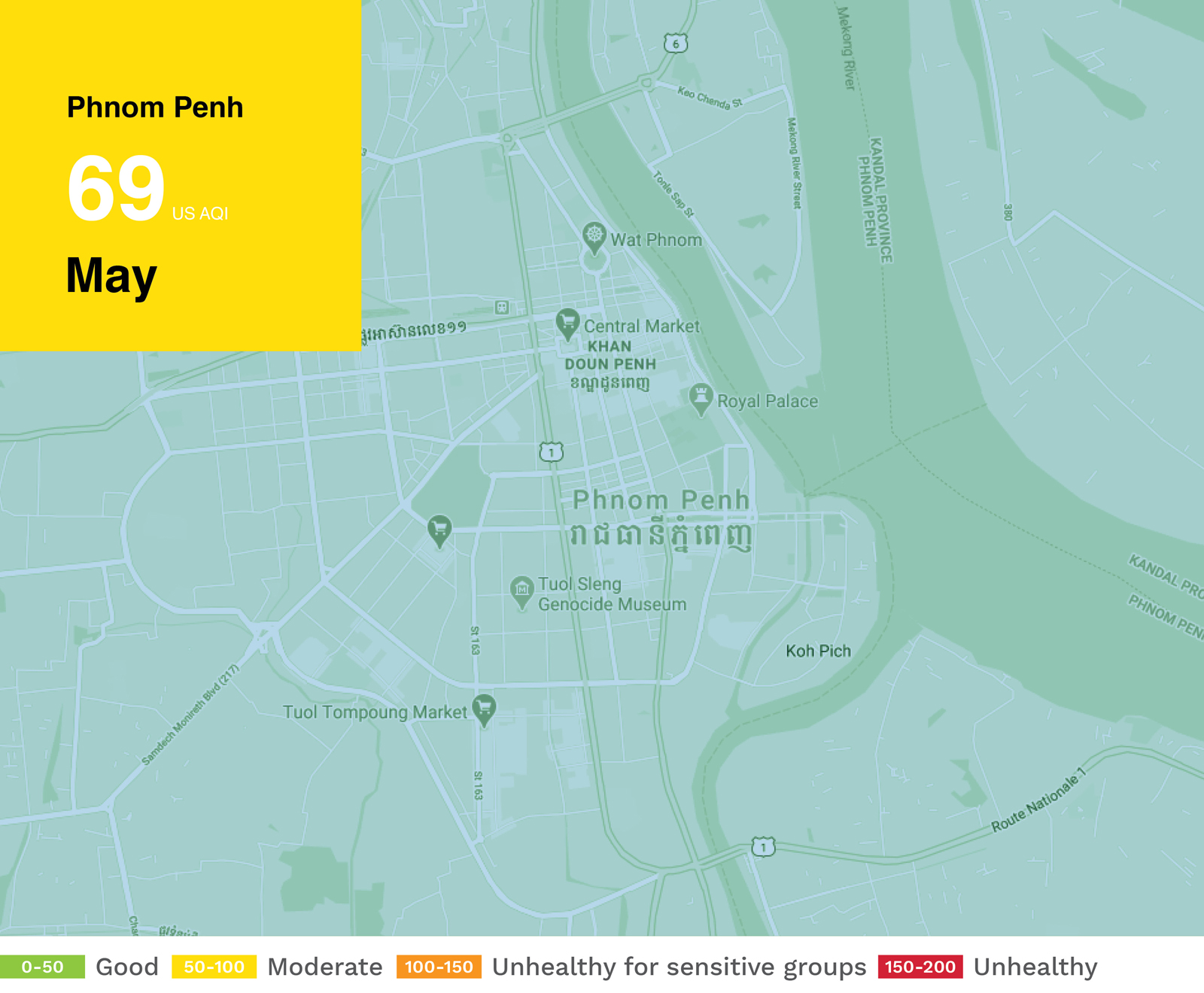
One of the smallest cities on the list, Phnom Penh has long been sought after by backpackers thanks to its low cost of living, accessibility and as the gateway to the rest of Cambodia.
Although, without a metro system and with an increasing number of people taking to the wheel, Phnom Penh’s air quality is getting worse, rather than better.
According to IQair, its average AQI in February sat at just over 100, a risk for those with existing health problems.
However, a nationwide lockdown implemented on April 16 by Prime Minister Hun Sen saw travel restrictions put in place across the country. The unprecedented step of cancelling Khmer New Year festivities was also taken, with the capital’s air quality getting better as a result, improving month-on-month until mid-May, and beyond.
YANGON
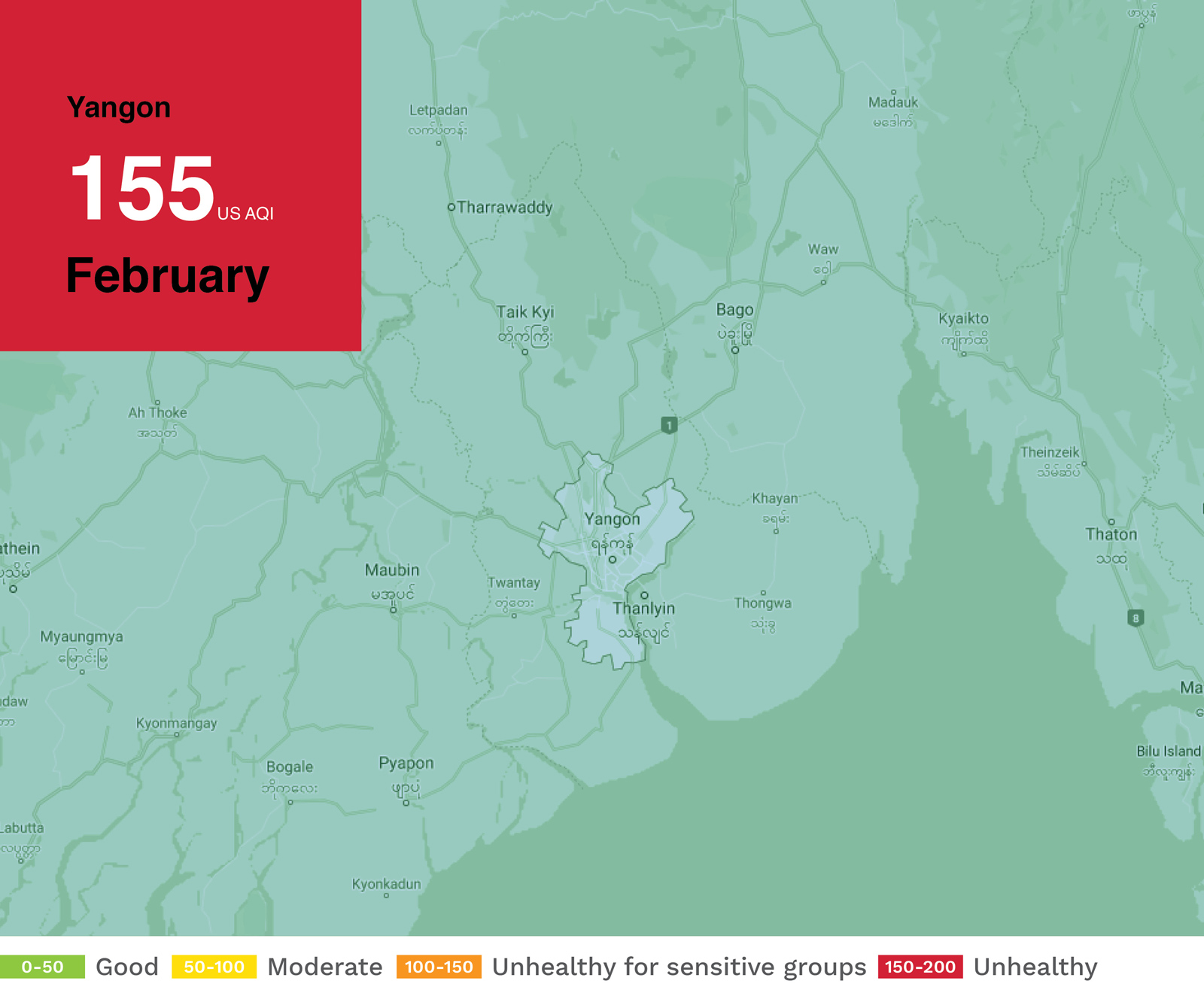
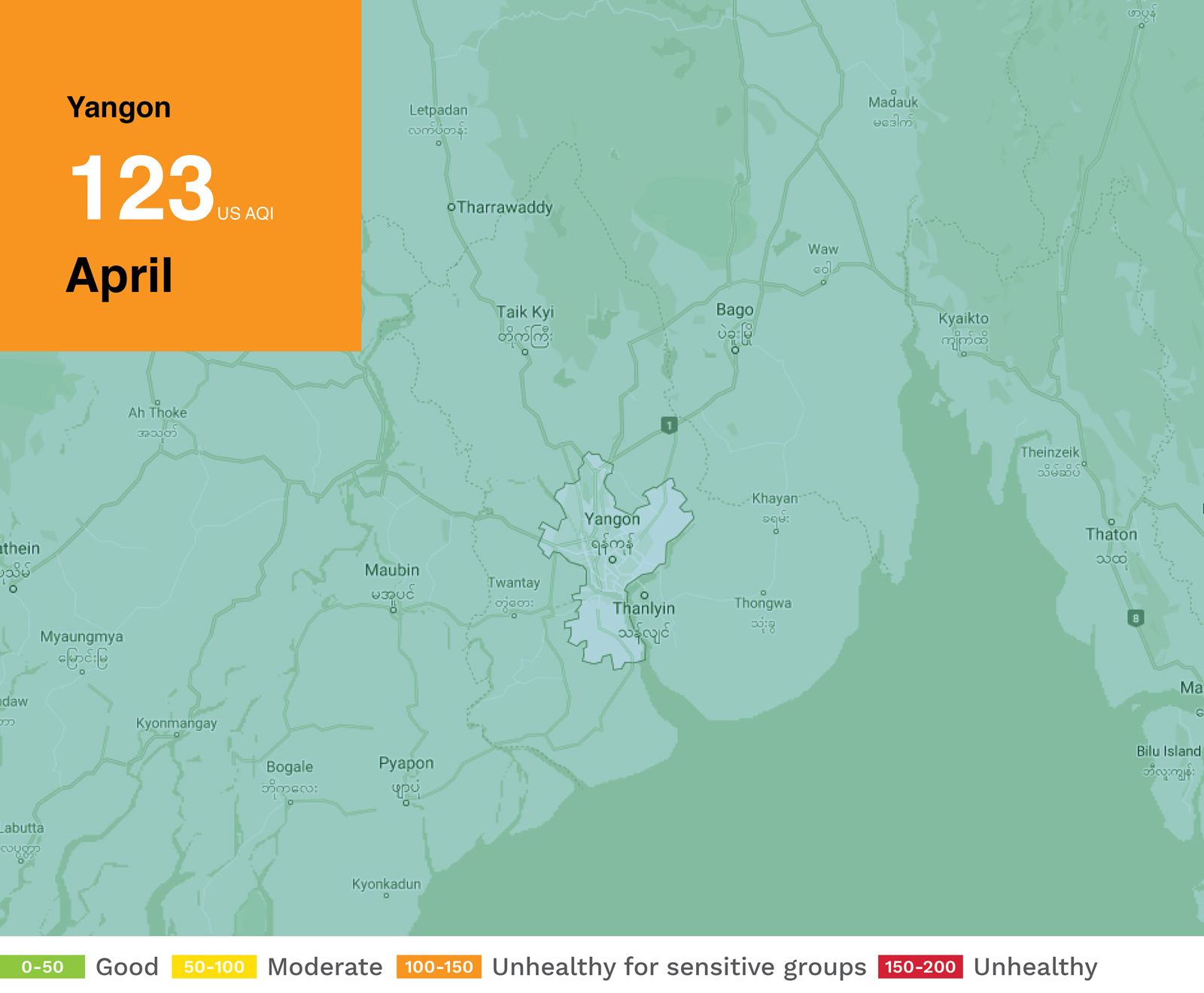
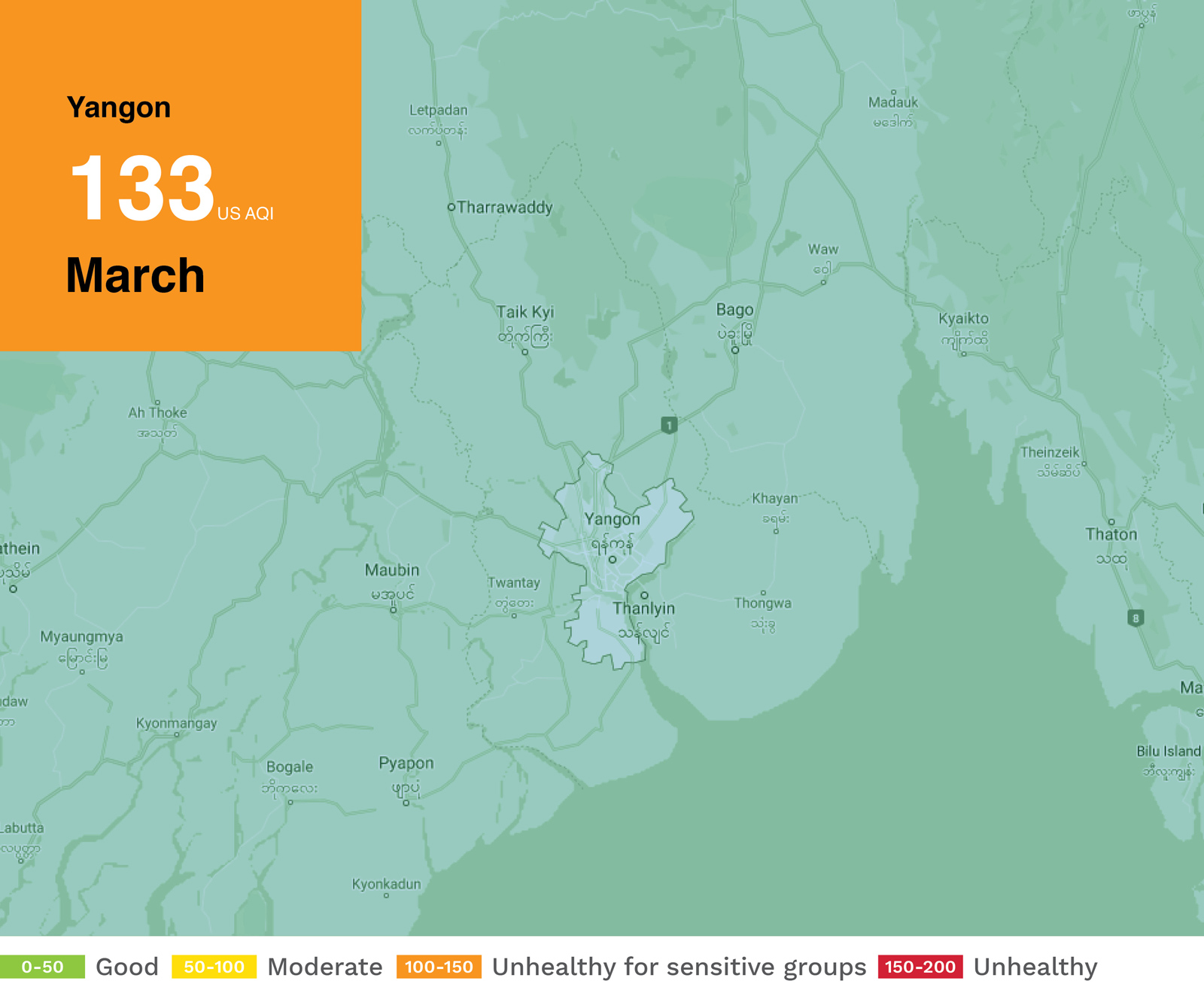
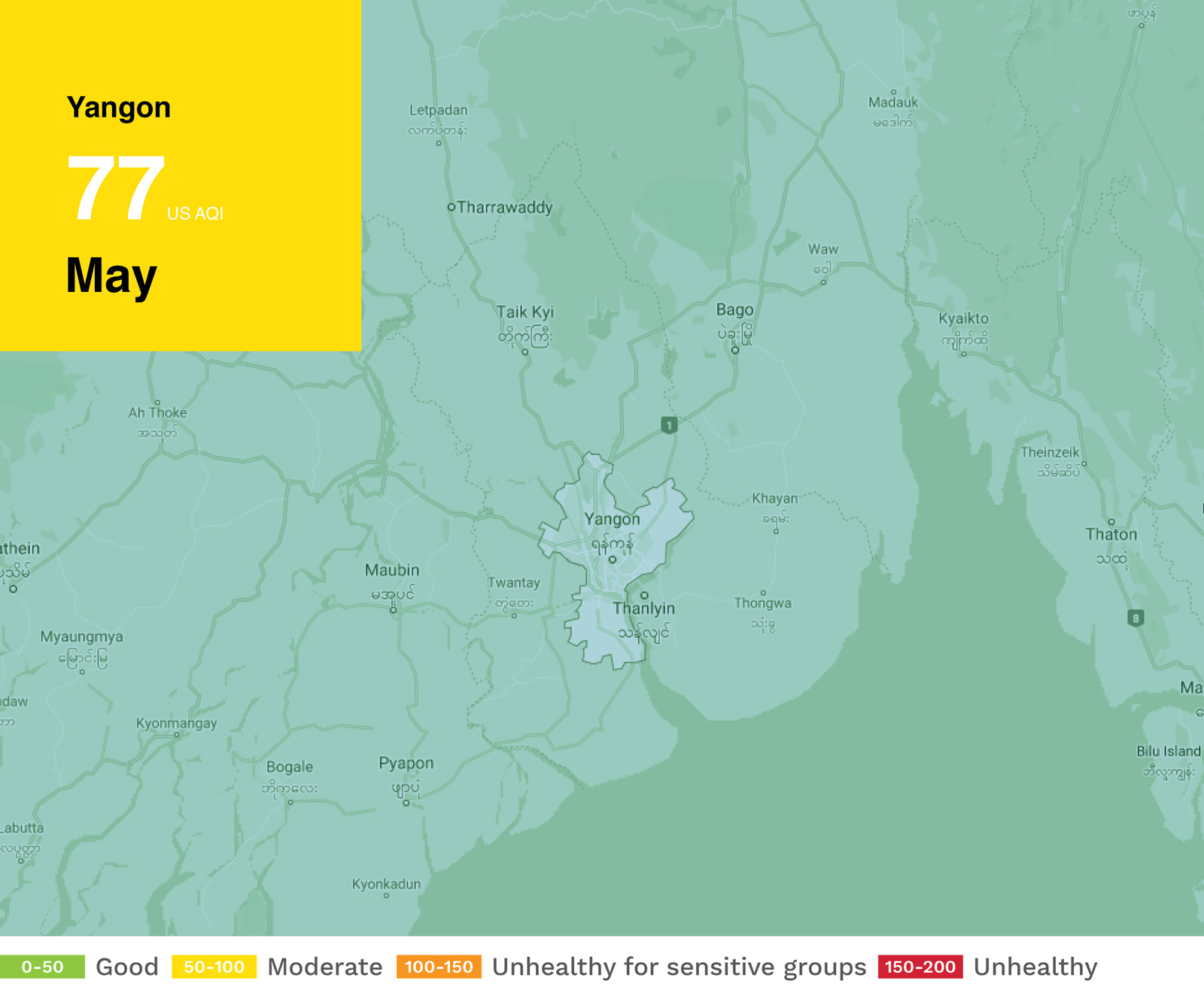
Myanmar’s largest city is known for its shimmering gilded Buddhist pagodas and modern high-rises, that is, if you can see them amidst the smog.
The air quality of Myanmar’s important commercial hub and most populous city was in the hazardous figure of 155 – ‘Unhealthy’ – in the month of February.
Some factors that account for putting Yangon firmly in the red are a combination of traffic diesel generators, slash-and-burn agricultural practices as well as burning of waste.
The Yangon region government imposed a 10pm-4am curfew for all Yangon townships on April 17. Government efforts were tightened further on April 18, with residents being required to stay at home, with a few exceptions.
The average monthly AQI in Yangon has seen a marked improvement in recent months, from 155 in February to a figure less than half of what it was in May – 77 and Moderate.
VIENTIANE
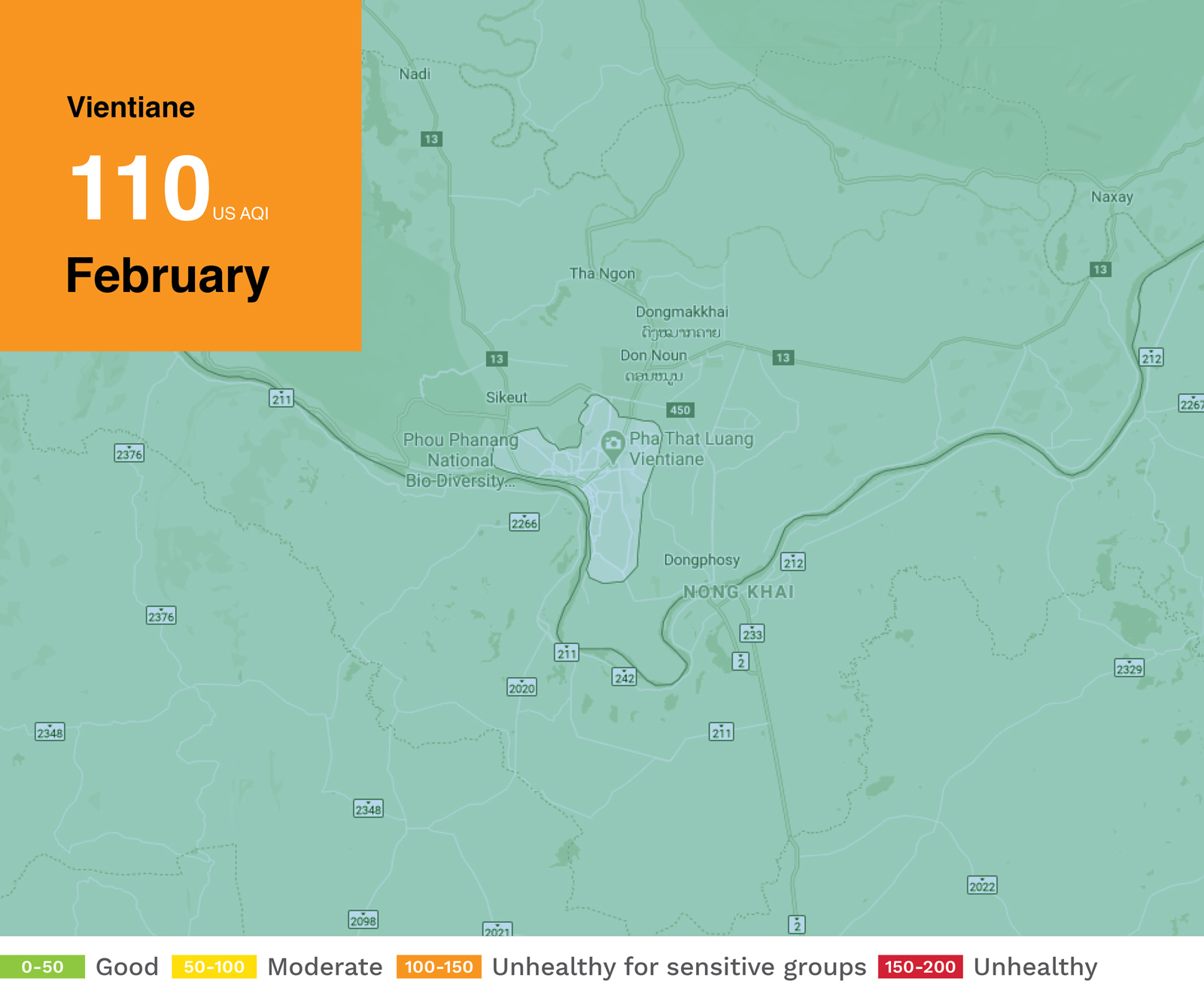
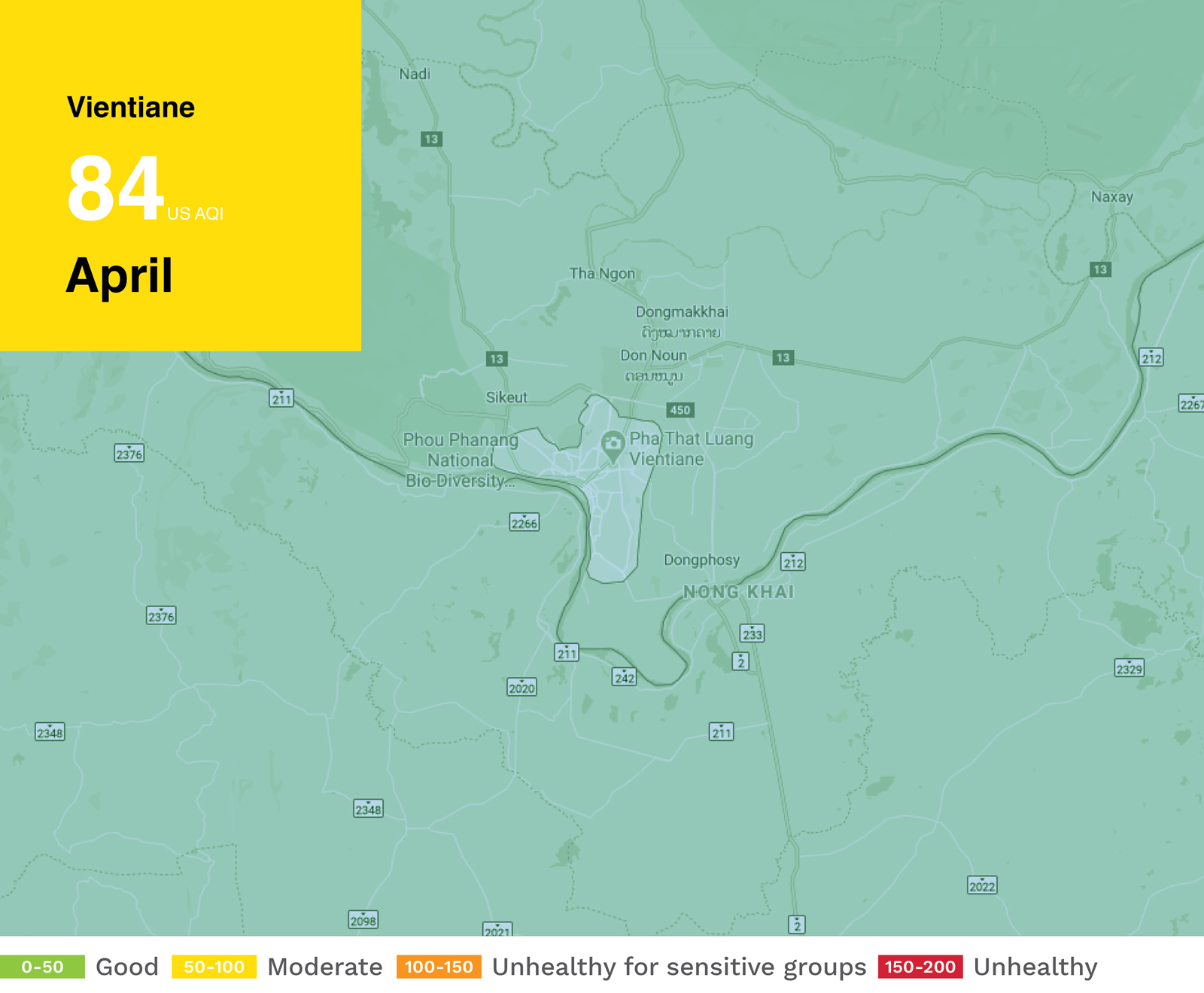
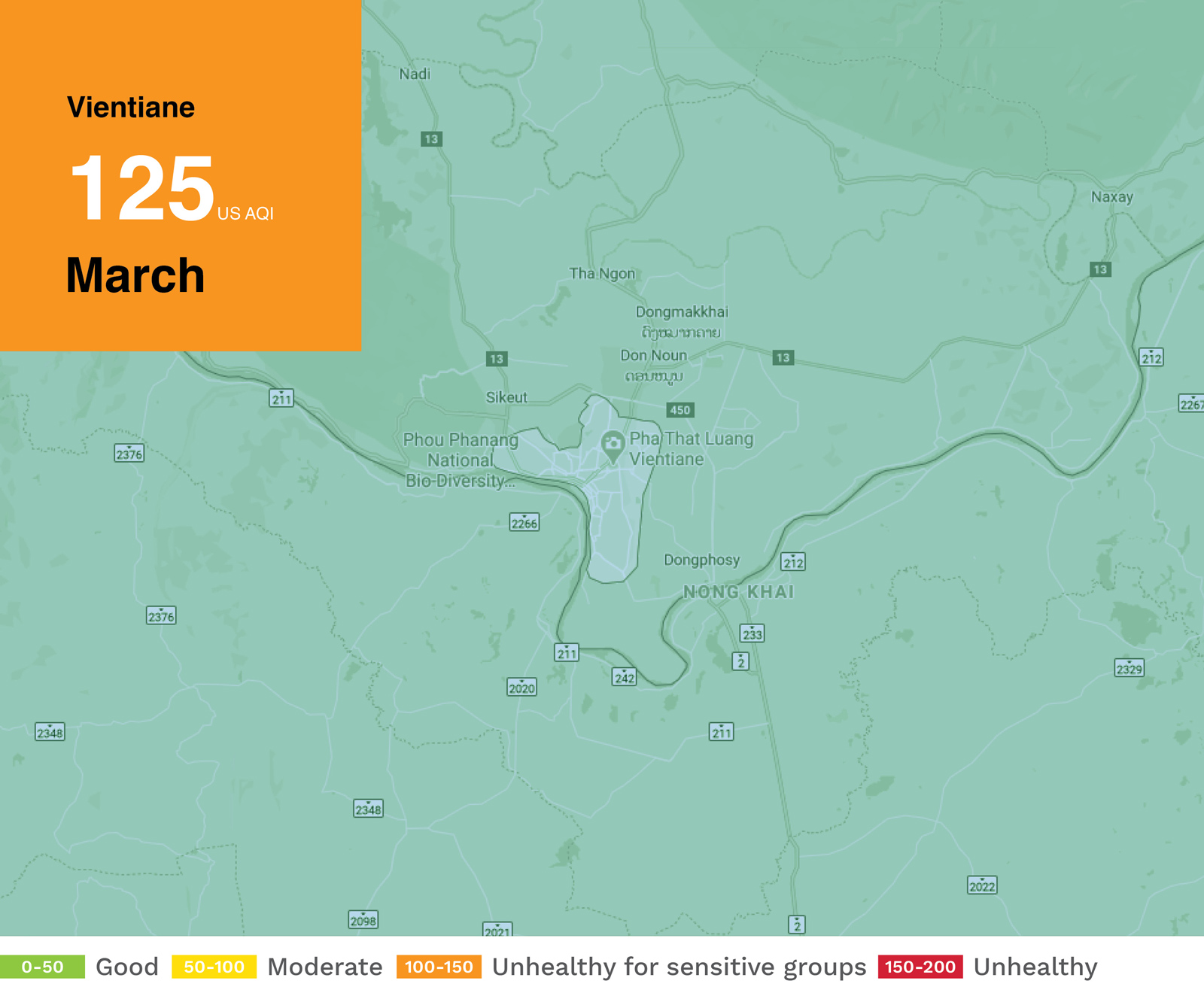
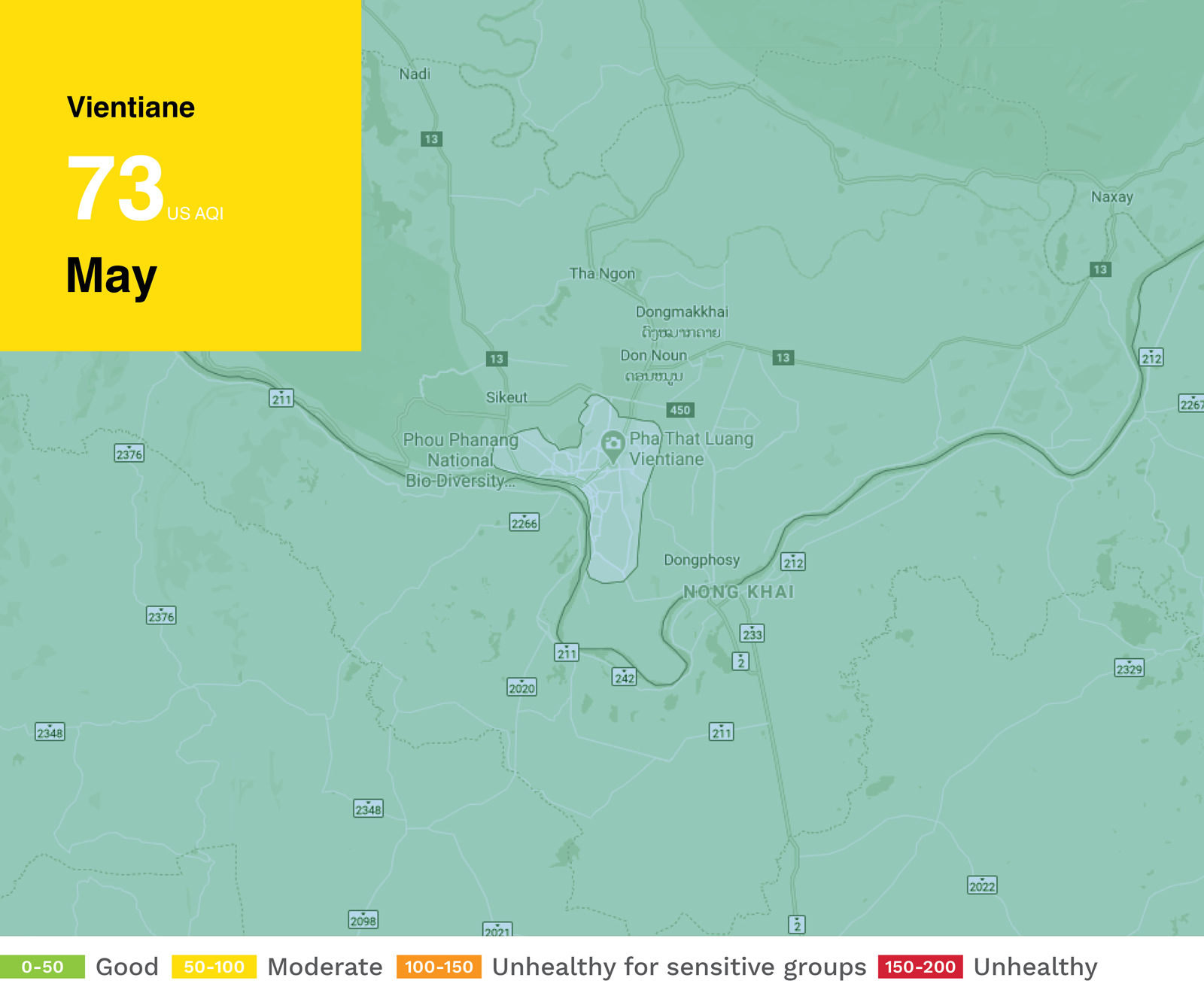
Small in size, historic in stature and with the best baguettes this side of the French border, the capital of Laos is a unique place.
However, throughout 2019, Vientiane was engulfed in continuous hazes of smog and increasingly poor PM2.5. In the case of 2019, it was attributed in part to a large forest fire in the capital’s Sangthorn District.
Authorities took steps last year to try and mitigate the deteriorating air quality in the capital, officially banning the burning of garbage in the city in late-December.
The average monthly AQI in Vientiane though has remained comparatively poor, for a relatively small capital city. Recent statistics from IQair, however, do illustrate the positive effect lockdown has had on the air quality in the city. The last Southeast Asian country to report its first COVID-19 case, Laos went into lockdown on March 30. With less travel, fewer number of cars on the road and reduced general activity, Vientiane’s monthly average AQI improved in the following months after, recording moderate levels of air quality in April to mid-May.
